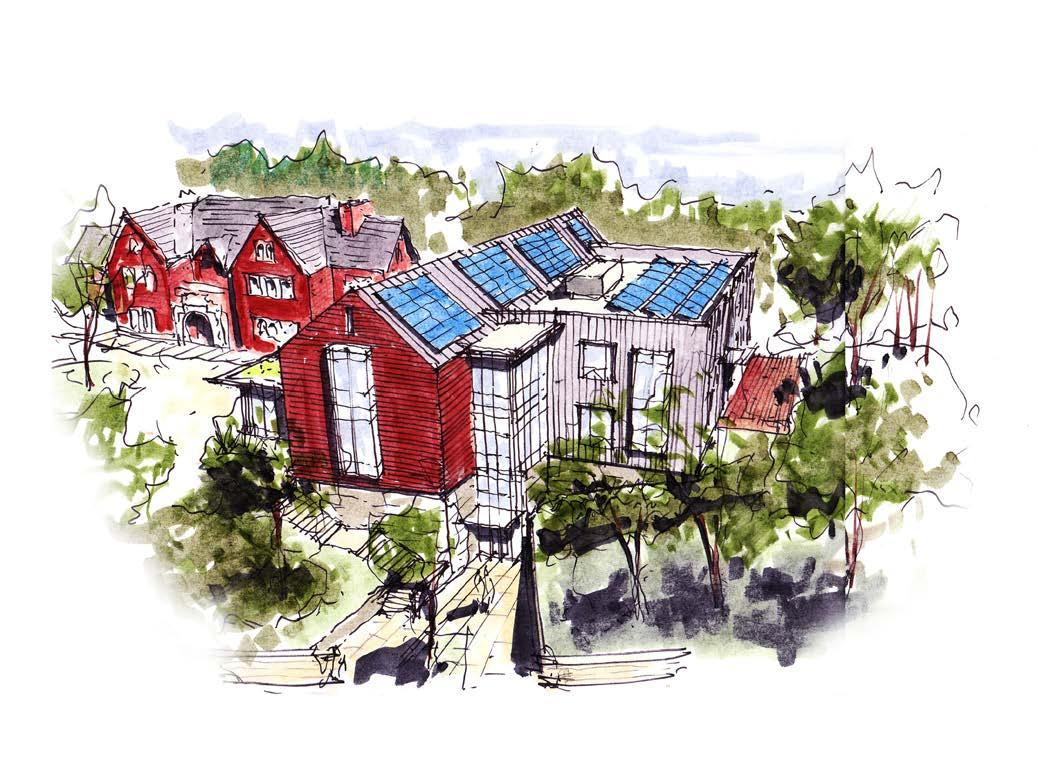
35 minute read
Education Master Plan
Campus News EDUCATION MASTER PLAN: Connecting to Place
UPPER SCHOOL CAMPUS UPDATE
Just as new insights into the science of learning inform teaching practices, school campuses evolve over time to reflect students’ needs and a school’s strategic vision. The most recent campus improvements at The Bush School took place in 2006, with the construction of the Lower School building, Mag Gym, library, and underground parking structure, and in 2000, with the addition of Wissner Hall on the Upper Campus.
Our current Education Master Plan (EMP), established in 2017, is comprehensive and presents the next iteration of our campus, including an additional Upper School building, a new Middle School building and Center Campus, and remodeling Gracemont to address updates to the city’s policy for retrofitting masonry on historical structures.
Given the scale and integrated scope of the plan, the Board recently made the thoughtful decision to begin implementation and start construction of the Upper School building in May 2020, following the steps laid out in the EMP. One of the key drivers behind this decision was generous philanthropic commitment from members of the school community. As conversations continue, broader community participation in the project will launch by spring 2020.
OUR COMMITMENT TO FINANCIAL AID
The new Upper School building will provide space for new students, which creates opportunities for more diversity in the classroom. With more students, a Bush education will change more lives, creating a world impacted by more Bush alumni. As an organization that provides transformational experiences, we are committed to increasing access to The Bush School. A new building represents a place to hold our vision for the school.
This strategy will relieve pressure on common spaces around campus, allowing us to provide enhanced opportunities for social, socioeconomic, and geographic diversity at Bush through increased enrollment, thus enriching the classroom experience and our community overall. The timely completion of this first phase of the EMP gives our community the opportunity to celebrate a significant achievement that will positively impact Bush’s future.
EMP: A LOOK AHEAD
A new Middle School building and Center Campus are the next projects in the EMP sequence. Planning is underway, and the timeline will be determined by community readiness and investment in the project. The scope of this portion of the EMP is the largest the school has ever undertaken. The question is not whether or not the project will happen, but when. The Board is fully committed to the new Middle School and Center Campus as are many members of our community. Regular updates will be shared with the school community.
OUR RELATIONSHIP TO THE ENVIRONMENT
The following is a statement that was adopted by the Board of Trustees in October 2018 and represents the school’s commitment to sustainability. The Education Master Plan process created an opportunity to establish principles and practices around environmental stewardship. This statement will guide planning and construction decisions throughout the process and beyond.
As a school community, we believe we have a moral and ethical obligation for the preservation and care of the natural, non-human world. We will use a lens of environmental sustainability as new buildings are designed and constructed, new programs are conceived, and as the school culture evolves.
We recognize that this is a process and that resources may limit our ability to fully implement every idea and best practice in this moment, but we will continue to strive for making our campus and planet a safer place for our students and the natural world.
One of our four educational foundations is “ethical judgement and action.” As a guide for the future, our work is based in three primary areas: People, Program and Place, as defined in our strategic plan. The Bush School has fostered a strong sense of place through its deep roots in the Seattle community, its commitment to place-based learning, and its outdoor education program. As we continue to grow our program, our campus, and our school, it is the right time to exercise “ethical judgement and action” regarding our relationship to the environment.
Gracemont and new Upper School building, viewed from Wissner Hall
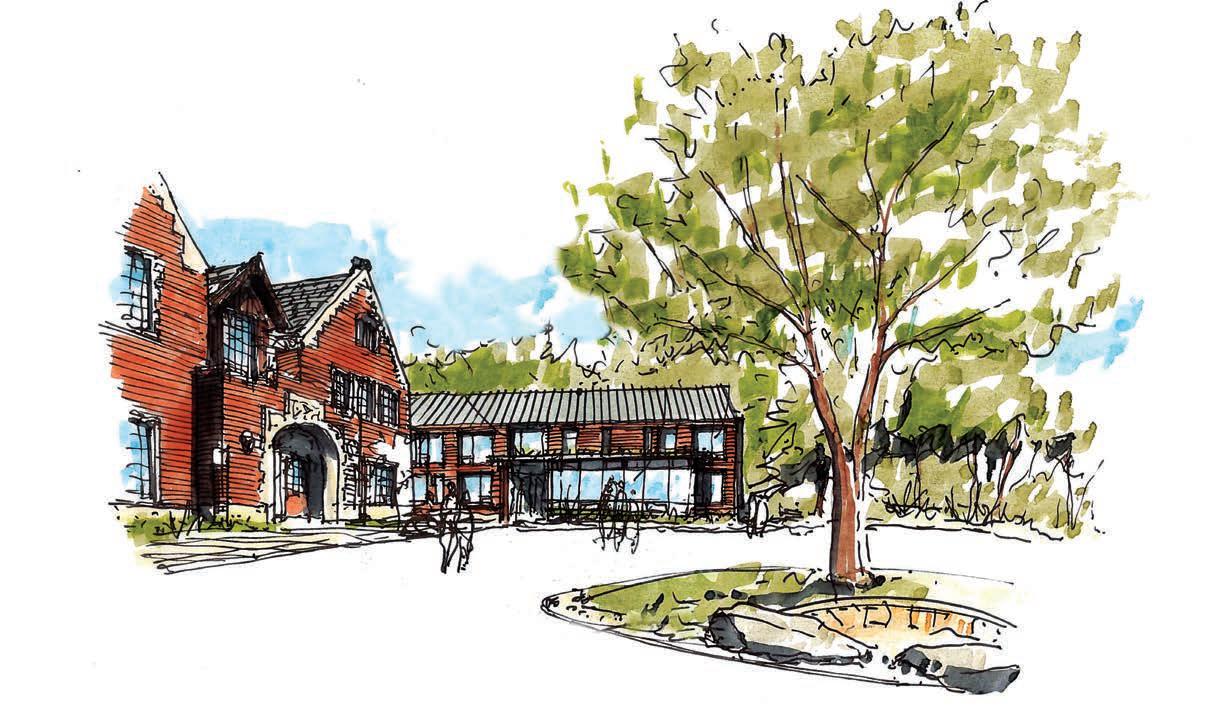
Oliver ’31
HOUSE: YELLOW MAPLES INFLUENTIAL TEACHER: JANET BISIGNANO
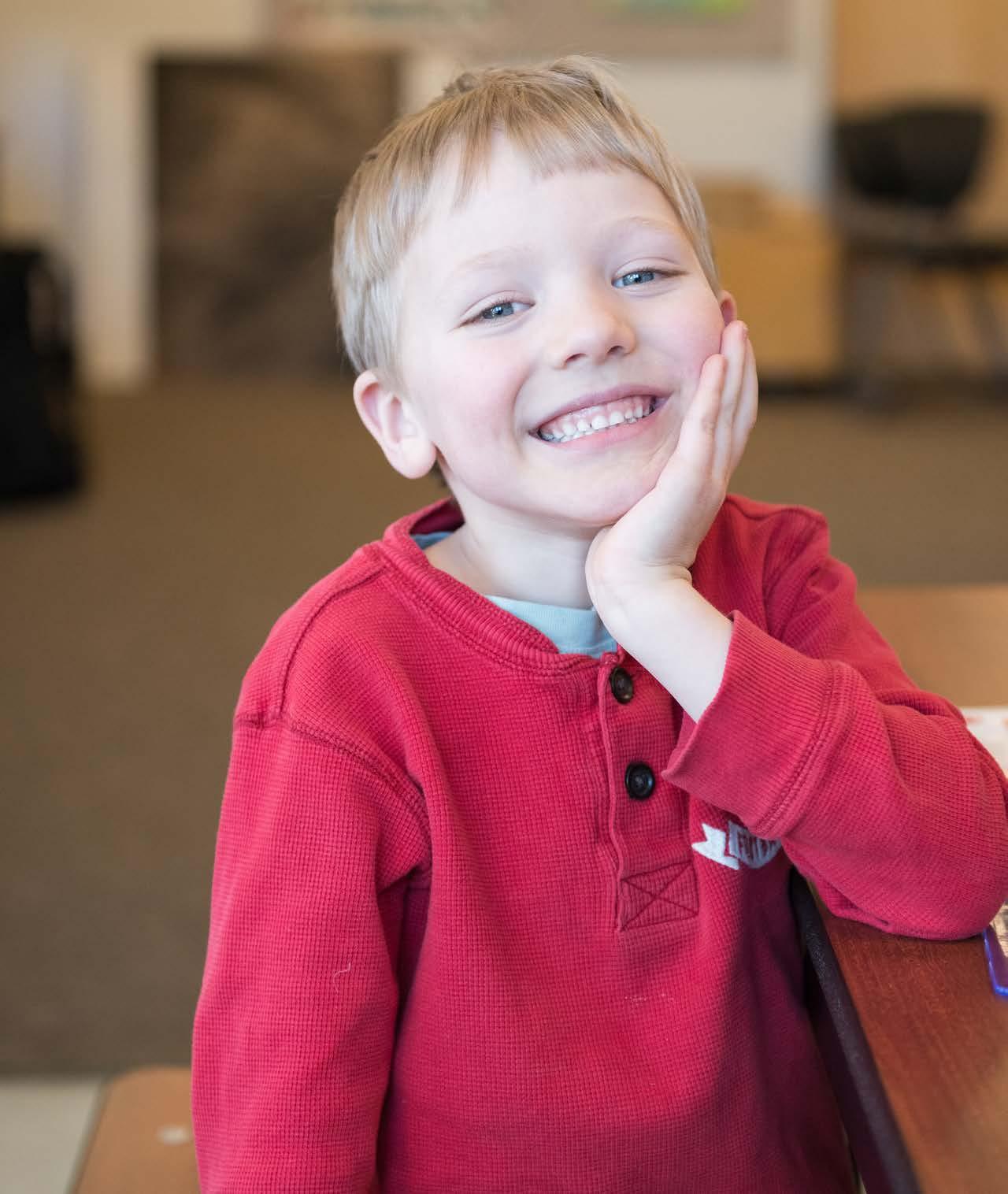
Sara ’21
HOUSE: GREEN GIANT SEQUOIAS INFLUENTIAL TEACHER: JABALI STEWART BUSH SHOULD NEVER CHANGE: It is hard to pick one thing, but I think that Convocation is really important to the culture at Bush. Having a coming-together ceremony is a really nice way to start of the year, and it’s nice to be able to be with the entire school.
“I think that true beauty is created when an oppressed or silenced group is able to push through the societal pressures put upon them, and express themselves as they wish. When people are able to present themselves in the way they view themselves, rather than how others view them, they are able to share their true beauty. Something that makes me really happy right now is learning new things. I have a lot of classes where we read some really interesting articles, books, and speeches, and even though I don’t tend to be the biggest fan of reading, I have really enjoyed these readings. I think that a lot of the things we read are related to many things I see in my life today, so being able to see those connections has really allowed me to push my thinking.”
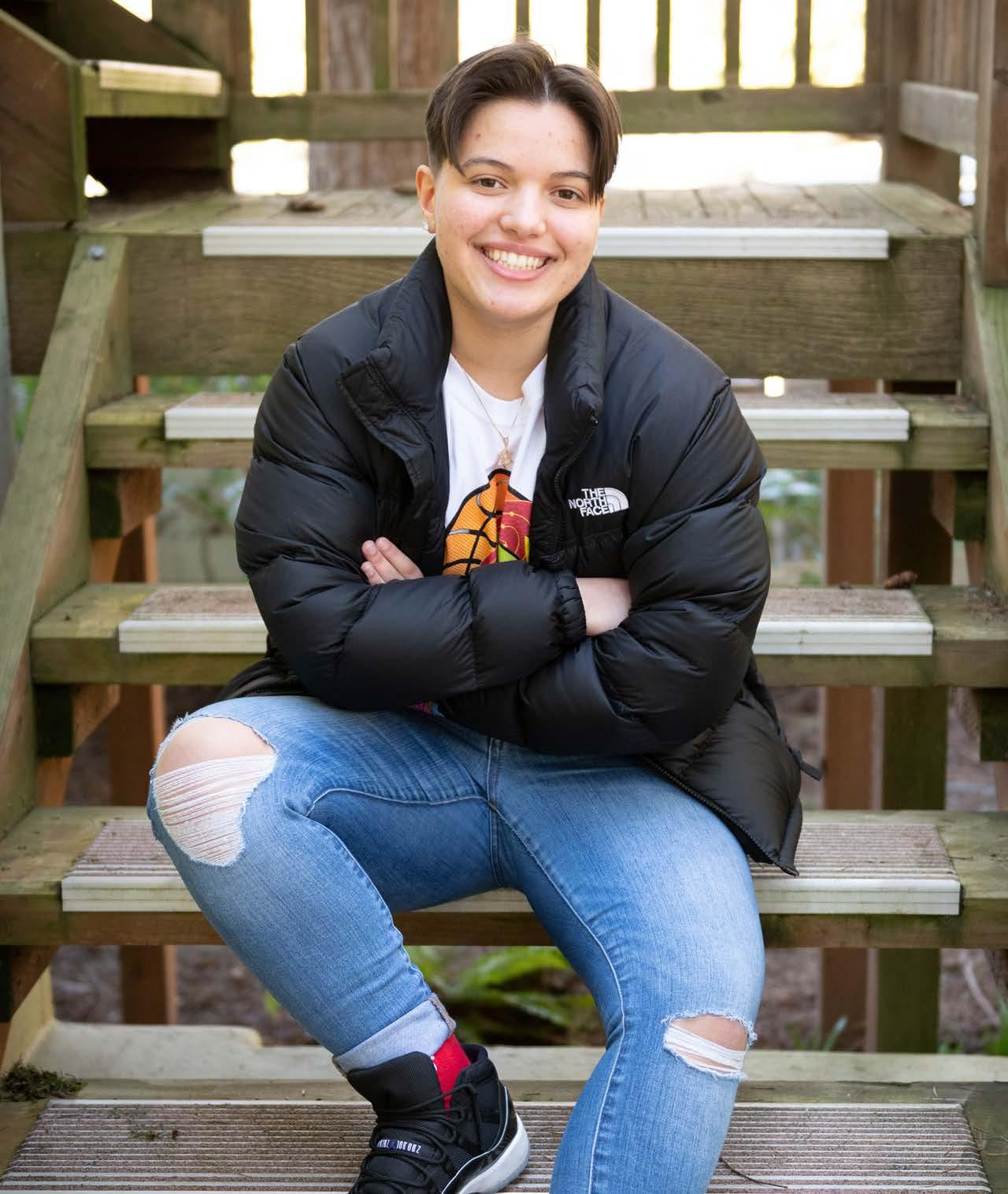
The Bush Upper School student newspaper, The Rambler, publishes articles on student life, as well as opinion pieces, reviews, and interviews. After following The Rambler’s comprehensive coverage of the Upper School schedule change, we asked them to write about it for Experience Magazine. Club leader Ali Smith ’20 took on the task.
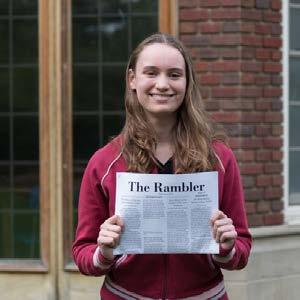
2018-2019 Daily Schedule Monday Tuesday Wednesday Faculty Thursday Friday Arrival 8:00-8:15 C 8:20-9:50 F 8:20-9:50 Arrival 8:00-8:15 Collaboration & Professional Development 8:00-9:20 B 8:20-9:50 E 8:20-9:50 Break 9:20-9:30
Break 9:50-10:05 Advisory 10:05-10:15
MMM/Class Meetings
10:15-11:00
Senate/Clubs/ Collaboration
10:15-11:00
A
11:10-12:40
D
11:10-12:40
A
9:30-10:10
Passing
B10:20-11:00
Passing
E11:10-11:50
Passing
D12:00-12:40
Break 9:50-10:05
Advisory
10:05-11:00
Advisory 10:05-10:15
Forum
10:15-11:00
A
11:10-12:40
F
11:10-12:40
B
1:40-3:10
E
1:40-3:10 Lunch 12:40-1:20
Conference 1:20-1:40
C
1:40-2:20
C
1:40-3:10
Passing
F
2:30-3:10
Conference 3:10-3:30
D
1:40-3:10
USschedule.indd 1 8/22/18 3:15 PM
Aligning
Schedules & Philosophy
Last year, when Upper School Director Ray Wilson unveiled the new schedule at an assembly, it launched a flurry of conversation and questions. Students wondered how teachers would adapt to teaching mostly long blocks, how Wednesday’s schedule would work, and what the replacement for AMP (now called “Cascades”) would look like. Although the Upper School schedule has changed multiple times in recent years, this is a far more profound shift than prior ones. It’s also been a long time in the making: a member of the schedule committee, which was dissolved last year, told me that discussions around switching to semesters have “come up at faculty meetings for fifteen years.”
Luckily for curious students, the school administration has been open about the purpose behind the change. In an email from August of last year, Ray wrote that the schedule will allow “more time for advisory, clubs, and reflection, as well as increased opportunities to delve deeper into course material, discover new passions, and create meaningful projects.”
Additionally, in his interview with The Rambler, Ray said that he wants to “slow down the pace” of school so that students and faculty can take time to “digest” and “reflect” on their experiences. The switch to semesters is meant to alleviate the pressure for faculty to rush to end a term, finalize grades, and begin the next term all at the same time.
My interviews with teachers indicate that they are generally feeling the intended positive impact. Upper School History Teacher and Ninth Grade Dean Raleigh Werberger says that semesters foster a “sense of completion,” while Upper School English Teacher Dan Osar reports that this year he has “more time to breathe” and feels “less rushed” in comparison to last year. Raleigh describes seeing “less anxiety from students,” which is backed up by the data from the survey that all Upper School students took earlier this school year: 52.7% of students—excluding the Ninth Grade, who lack previous experience in the Upper School—report that this schedule feels less stressful than last year’s, and only 15.6% report that it feels more stressful.
Several teachers told me that the new schedule has encouraged them to cut back on homework, especially because of the rule prohibiting assigning assignments for
Upper School Director Ray Wilson talks with a group of Upper School students in the Urban Courtyard
Challenge Success
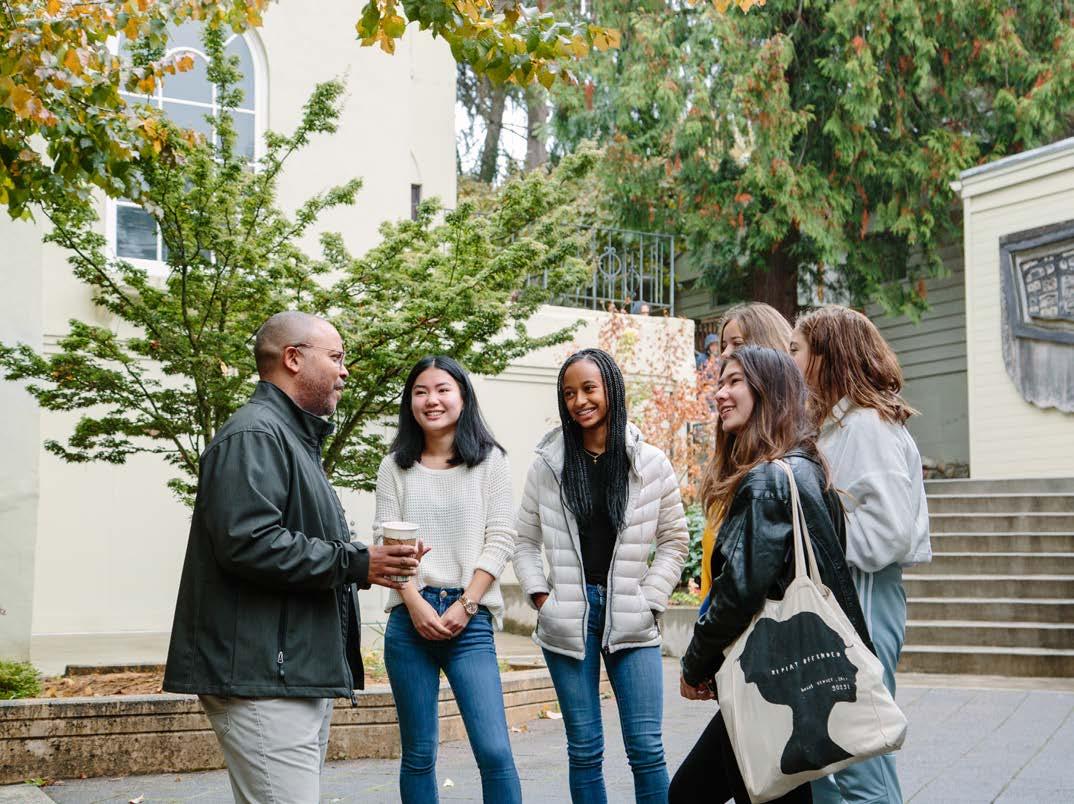
During the Upper School’s work with Challenge Success, a Stanford University Graduate School of Education affiliated program which provides tools for helping students lead more balanced and academically fulfilling lives, it became clear that adjusting the schedule will help create a more balanced learning environment for all Upper School students and faculty.
Yearly Calendar
In 2019–2020 and beyond, The Bush Upper School’s yearly calendar will consist of two semesters and two threeweek-long Cascades terms. Benefits of moving from three terms to two semesters include reducing overlapping peaks in coursework, ending the term before winter break to afford students a work-free break, reducing time spent in setup and wrap-up of each term, and supporting our curricular goals around deeper learning.
Daily Schedule
The goals of the new schedule are to provide a more balanced student academic experience, foster meaningful connections between students and teachers, promote teacher collaboration and curricular planning to benefit student learning, and increase access to the city of Seattle as part of our learning environment.
In 2018–2019 and beyond, the Upper School schedule:
increases the length of classes from fifty- and eighty-fiveminute classes to ninety-minute classes and forty-minute flex periods; reduces the number of classes taught in a day from five to three*; reduces the number of transitions within a day; builds in more community and conference time; and offers a late-start collaboration period one day a week. * In a normal week, on Mondays, Tuesdays, Thursdays, and Fridays, students will attend three classes; on Wednesdays students will attend all classes.
Wednesdays, when all classes meet. Upper School Math Teacher Alban Howe says that he has been able to reduce “busy work.” Upper School Science Teacher Brooke Krolick appreciates that her students can now conduct a lab and analyze the results in one period, instead of having to finish the questions as homework. Students seem to have felt these changes: According to the school’s survey, 54.9% of students agreed that their “homework load feels manageable this year.”
In regards to long blocks, the teachers I interviewed told me that the longer periods encourage them to go deeper into a subject. Dan says that long blocks allow him to probe the facets of a subject through “more variety and choice with activities.” Brooke reports that, because of the new schedule, her animal behavior class can take field trips to the zoo every Friday. Upper School French Teacher Esther Reiquam says that she likes the “rhythm” of the long blocks and that they allow her classes to “move forward a bit organically.” Freshman Abby Goodfried ’22 appreciates that “teachers do a really good job of filling [the long blocks].” While fellow Ninth Grade student Addie Zamudio ’22 says, “I think the ninety-minute blocks are really nice for getting work and projects done.” According to the official survey, 44.1% of non-freshman say that their long blocks are “engaging most of the time,” and 58.7% of freshman agreed. Only 2.1% of students said that their long blocks failed to be engaging most of the time.
However, both students and faculty report that the Wednesday schedule, where classes meet for forty-minute periods, is stressful and tiring. It is possible that this aspect of the schedule will be reconsidered in the future. However, when asked about the opportunities Wednesday’s late start provided for extra sleep or time for homework, the freshman The Rambler talked to were generally enthusiastic. As Abby Goodfried succinctly put it, “I love the late start.”
When talking about the new schedule, it’s important to remember that it hasn’t actually been fully implemented yet: the two three-week Cascades will begin next year. In The Rambler’s interview with Ray, he explained that he designed this year’s transition schedule because “the faculty need a little bit more planning time to really roll [Cascades] out thoughtfully.” Looking forward, the teachers I spoke to expressed excitement about the Cascades Immersion Program. Upper School History Teacher and Twelfth Grade Dean Susanne Eckert is eager to focus on “experiential components in a more significant way,” while Upper School Art Teacher Marilyn Smith anticipates the freedom to “do a really big range of activities.” She says intensives will be “very project-based” and incorporate “student say and voice” in their planning and direction.
Overall, the new schedule represents The Bush School administration’s tangible effort to further integrate experiential, progressive, project-based learning into the Upper School’s curriculum and schedule. It is also an attempt to minimize student and faculty stress. Although the schedule is still in a stage of transition, preliminary data and testimony suggests that it is succeeding in those goals.
Cascades Mission & Philosophy
The Bush School divides the Upper School program into two semesters in the Fall and Spring, and two three-week Cascade terms in winter and spring. Cascades will begin in the 2019-2020 school year. During Cascades, students take a single interdisciplinary course of study, led by interdepartmental teaching teams. These thematic immersive experiences are comprised of students across all grade levels. Cascades are academically engaging, challenging, and require students to solve complex problems and face real-life challenges both on and off campus.
Indiana ’19
HOUSE: PURPLE SUGAR PINES INFLUENTIAL TEACHER: CHELSEA JENNINGS BUSH SHOULD NEVER CHANGE: People always change, and that’s what I love most about Bush: the people, the teachers. And it’s okay that they change, because even though I love Chelsea Jennings and Paula Dowtin and Bill Baber right now, I also love that they’re changing, that they’re growing, and that I get to grow with them, too.
“To me, beauty means order, structure, cleanliness. The perfect hanging indent of a bibliographic entry. Calm, serenity, peace. Watching the sunrise bloom over the Gracemont lawn on a chilly December day. Most importantly, it means shared smiles, hugs, fuzziness, warmth. I’ve been making a list of book recommendations from my best friends, favorite teachers, and cool people I meet. I get to read what they’ve read and have kept in their minds to ponder or cherish. I get to listen to them share the chapters that have stuck with them and the lines that repeat themselves in their heads. I get to listen to them go on and on and talk about the things they love.”
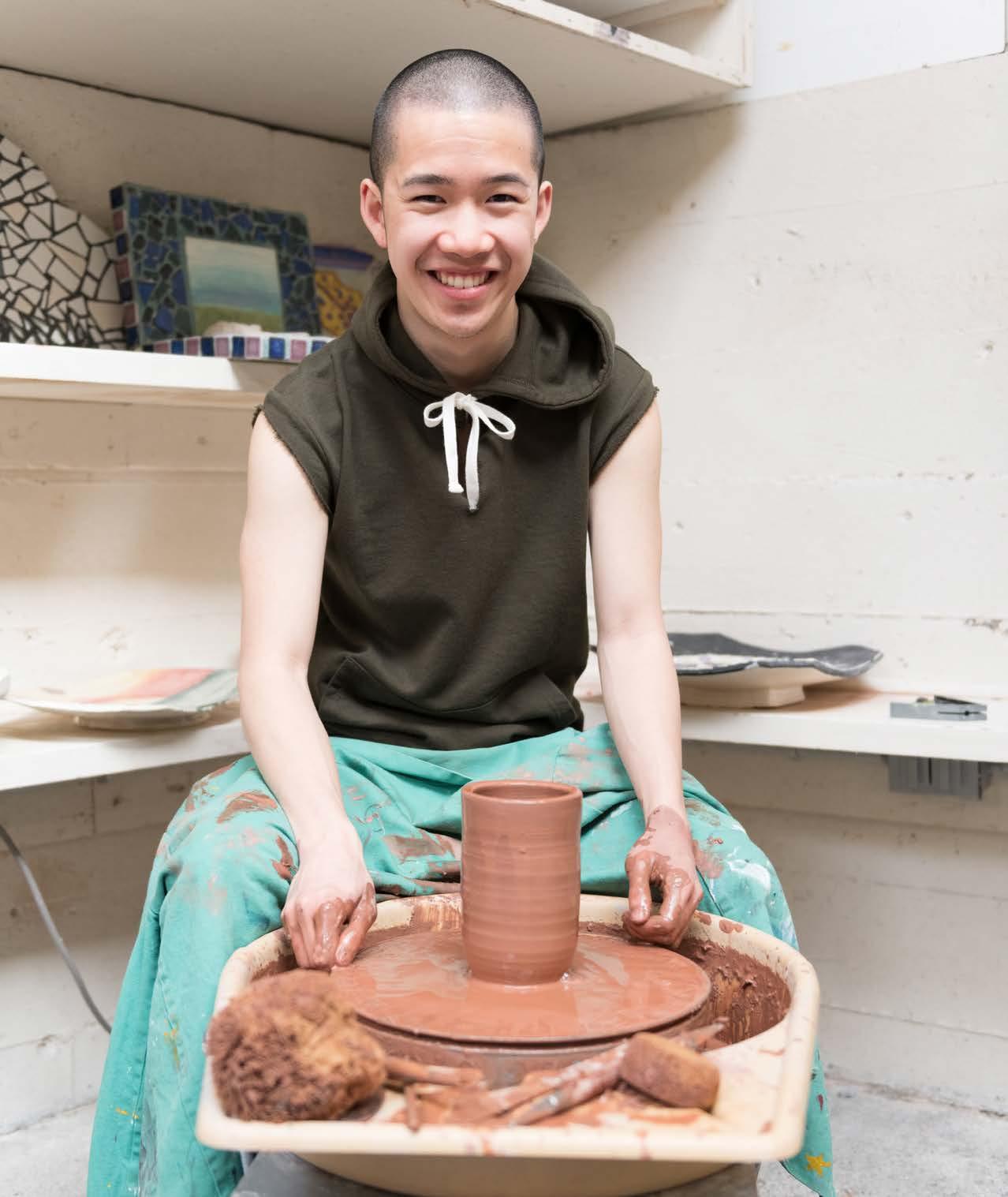
IN THE CLASSROOM
Helping Superheroes
This January, the students in the Superhero Design Challenge AMP analyzed world-building and representation in Superhero comic books, helped the Fourth Grade comic book club develop their own superhero identities, explored some new corners of the city of Seattle, and developed their own comic books. Together, they ate dim sum and asked complicated questions such as: “Who gets to be a hero?” and “Who gets to be a creator?” using the comic book form.
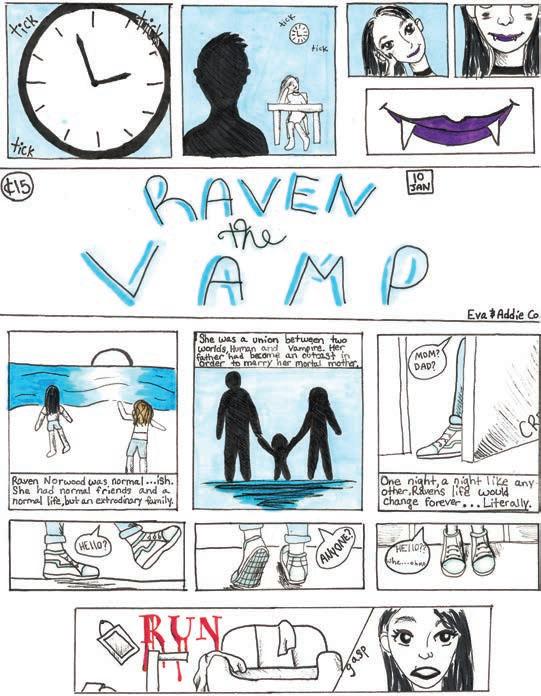

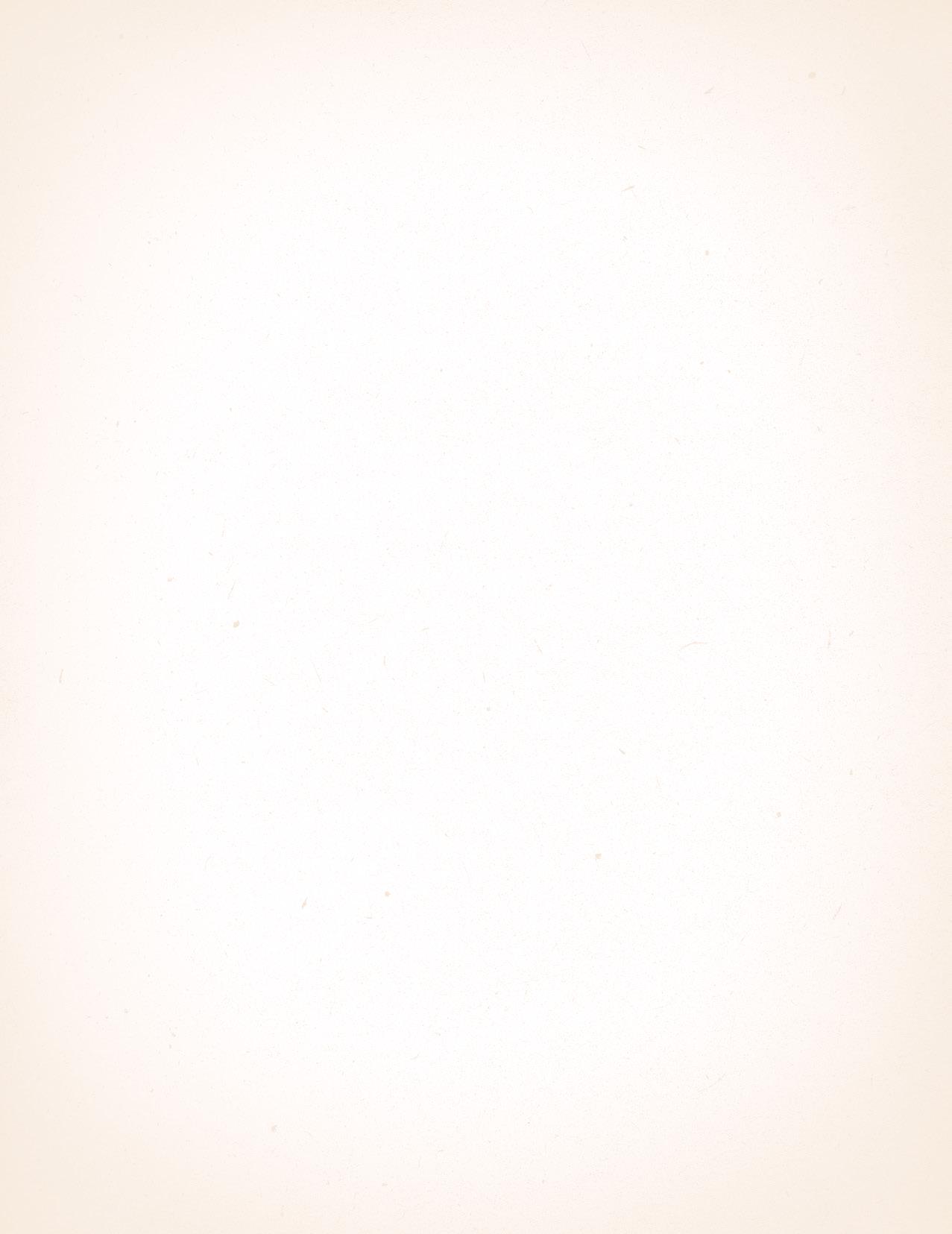
Academic Dean AKA “Academio” DR. SALLY MAXWELL & Upper School Spanish Teacher AKA “Lady Lengua” MONICA GARTMAN
MONDAY: Use the design-thinking process to design a power object for a Fourth Grade superhero.
TUESDAY: Work session; Analyze how allies and enemies are represented in World War 2 Comics
WEDNESDAY: Work session; trip to Fantagraphics to meet a comic book publisher and artist and learn about Seattle’s role in the comic book industry.
THURSDAY: Trip to the International District for observational drawing, guided “Heroes” tour at the Wing Luke Museum, pinball museum, and dim sum.
FRIDAY: Work session; trip to see Into the Spiderverse
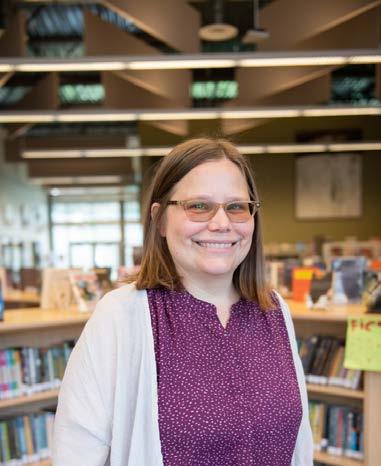
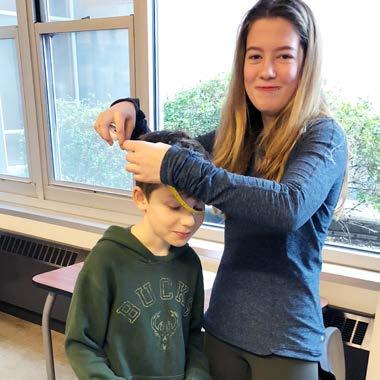
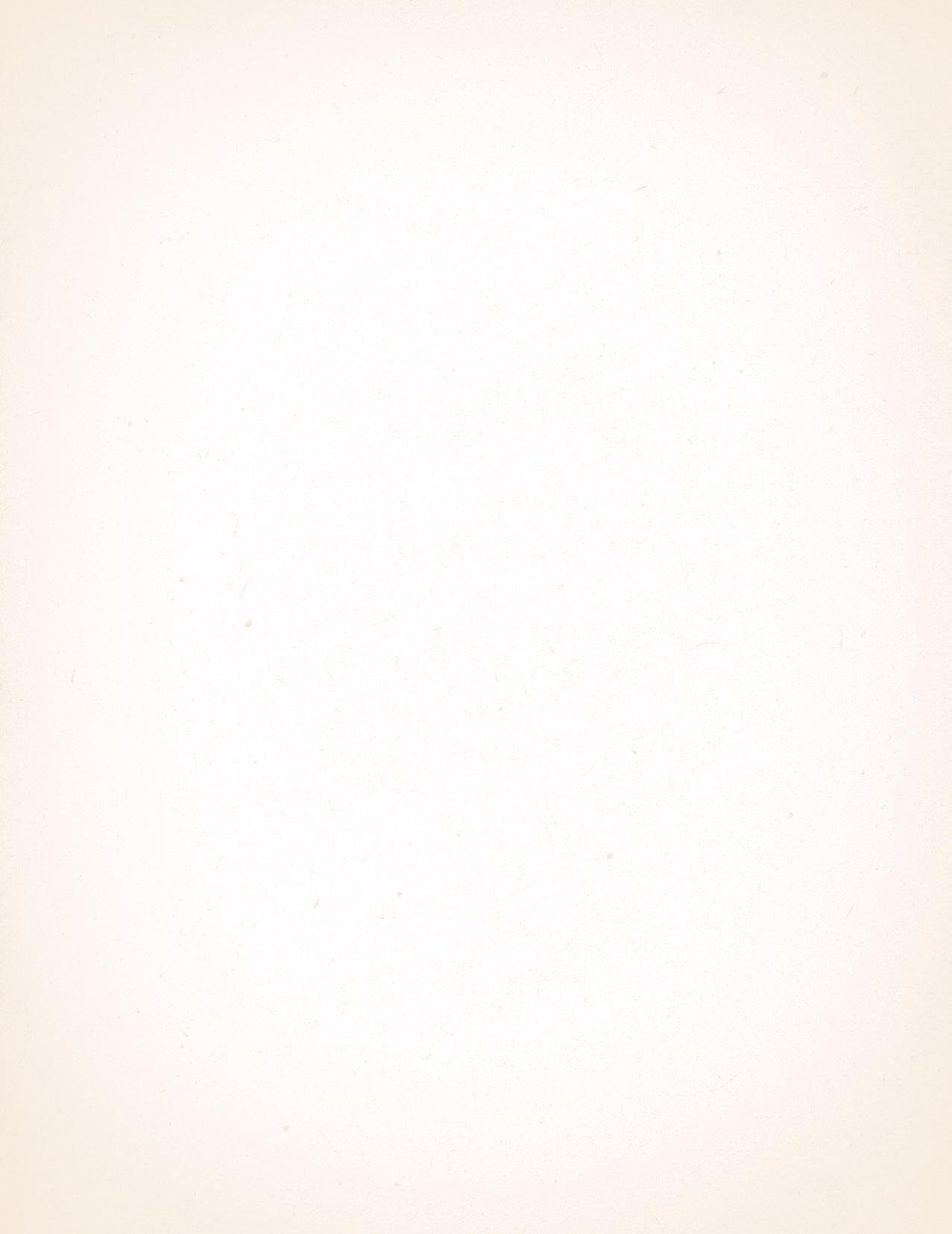
The Bush School Superhero Design Challenge he Superhero Design Challenge AMP students started the week with a one-day design challenge: to build an object or wearable costume element for a member of the Fourth Grade comic book club. The Fourth Grade students had been working with Academic Dean Dr. Sally Maxwell, one half of the dynamic teacher duo offering the Superhero Design Challenge AMP. Comic book heroes like Batman and Wonder Woman are dramatically different from average people, and so is their stuff. Tony Stark built Captain America a shield, and Shuri built Bucky a new arm out of Wakanda’s secret resource: vibranium. Playing the role of employees of Stark Industries, the Upper School students used the design-thinking process to design a power object for a Fourth Grade superhero client. They considered: What would have symbolic and practical value for their superheroes?

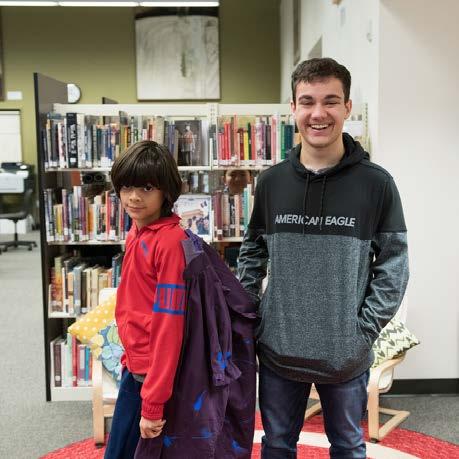
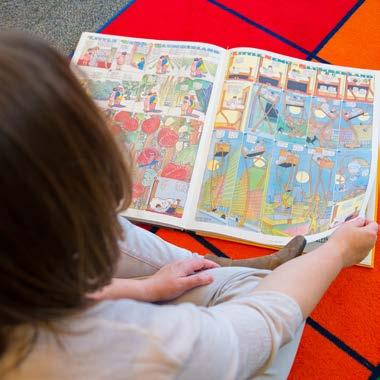
In preparation for design day, the students in the Fourth Grade comic book club identified their personal strengths and turned those into superpowers. They wrote origin stories and designed costumes for cool new heroes like “Splarm” and “Sports Dude.”
When the Upper School students and their Fourth Grade client heroes met, the Upper School students interviewed the Fourth Grade students about their superhero identities and then sketched multiple design objects. After making a final decision with their clients, the Upper School students went to Goodwill where they had thirty minutes and $20 to buy materials for their projects. Back at Stark Industry Labs (also known as the Bush Library Makerspace), the Upper School students designed the power objects and presented them to the Fourth Grade clients.
While the Superhero Design Challenge AMP is over, the Upper School students and the Fourth Grade students have all begun comic books, so it’s really...THE BEGINNING

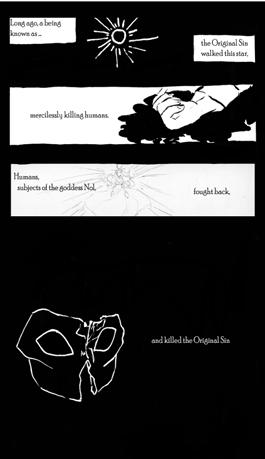


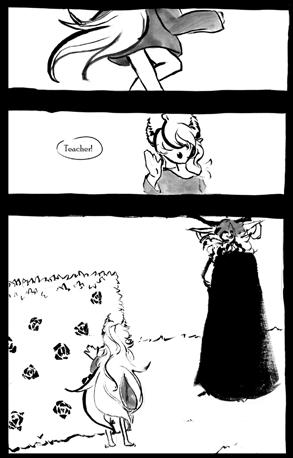
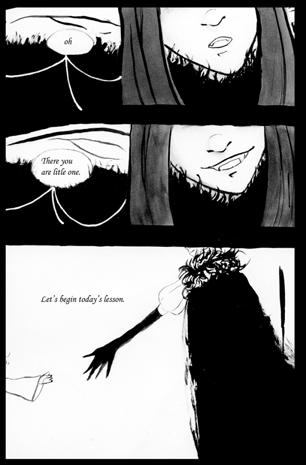



“I see beauty in reading poems and stories and in arts, such as kung fu and music. I see beauty in people—in their character and in relationships. I am currently working on my EIP (Experiential Independent Project). For my EIP I am building my own watch from scratch and learning the beautiful art of horology. This is an awesome experience and it was a big risk choosing my project. I have been fascinated with watches, but when I came up with the idea I did not know if it would be possible for me to build a watch from scratch by myself.”
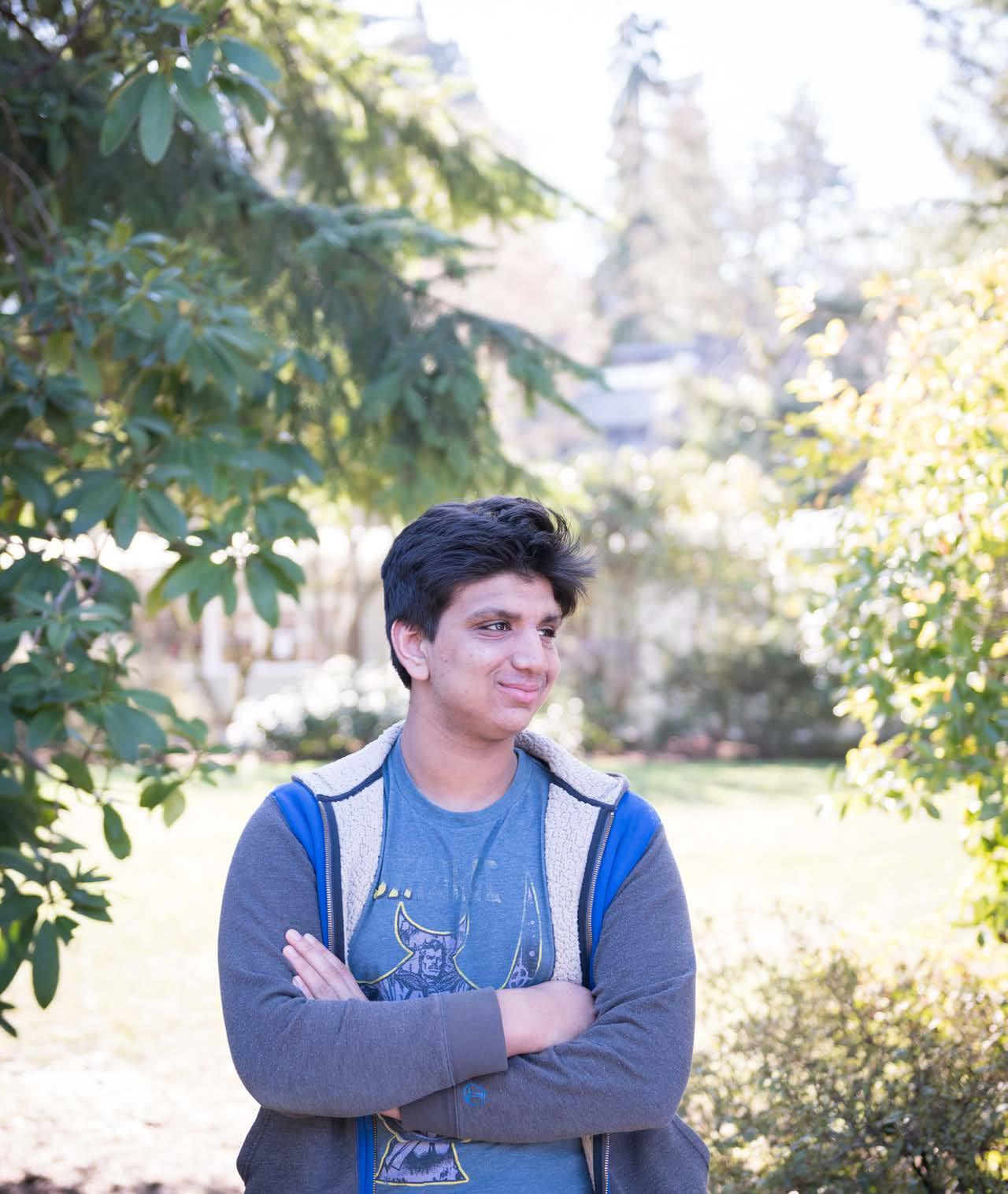
Armaan ’23
HOUSE: GREEN GIANT SEQUOIAS INFLUENTIAL TEACHER: STACY BELL & SARAH COHEN BUSH SHOULD NEVER CHANGE: The experiential learning such as the outdoor adventures at Bush. Because of this I get to experience new and fun things that I usually have not done before. At Bush when we do this, we create bonds with new people as well as strengthen the bonds and experiences with people that we know.
“A quality that I find undeniably beautiful is when some one is true to themself, real. It is when someone feels comfortable enough to be in their own skin and is willing to be vulnerable. I am currently working on welding a metal lily out of copper. Creating this lily has made me appreciate and respect the craftsmanship that goes into tools I use daily.”

Mei Mei ’22
HOUSE: RED WESTERN CEDARS INFLUENTIAL TEACHER: SUSANNE ECKERT BUSH SHOULD NEVER CHANGE: The way that the adults give weight to the students’ opinions and ideas. This allows the school to have a balanced curriculum of rigorous academics and light-hearted activity between students and teachers.
Bilal ’29
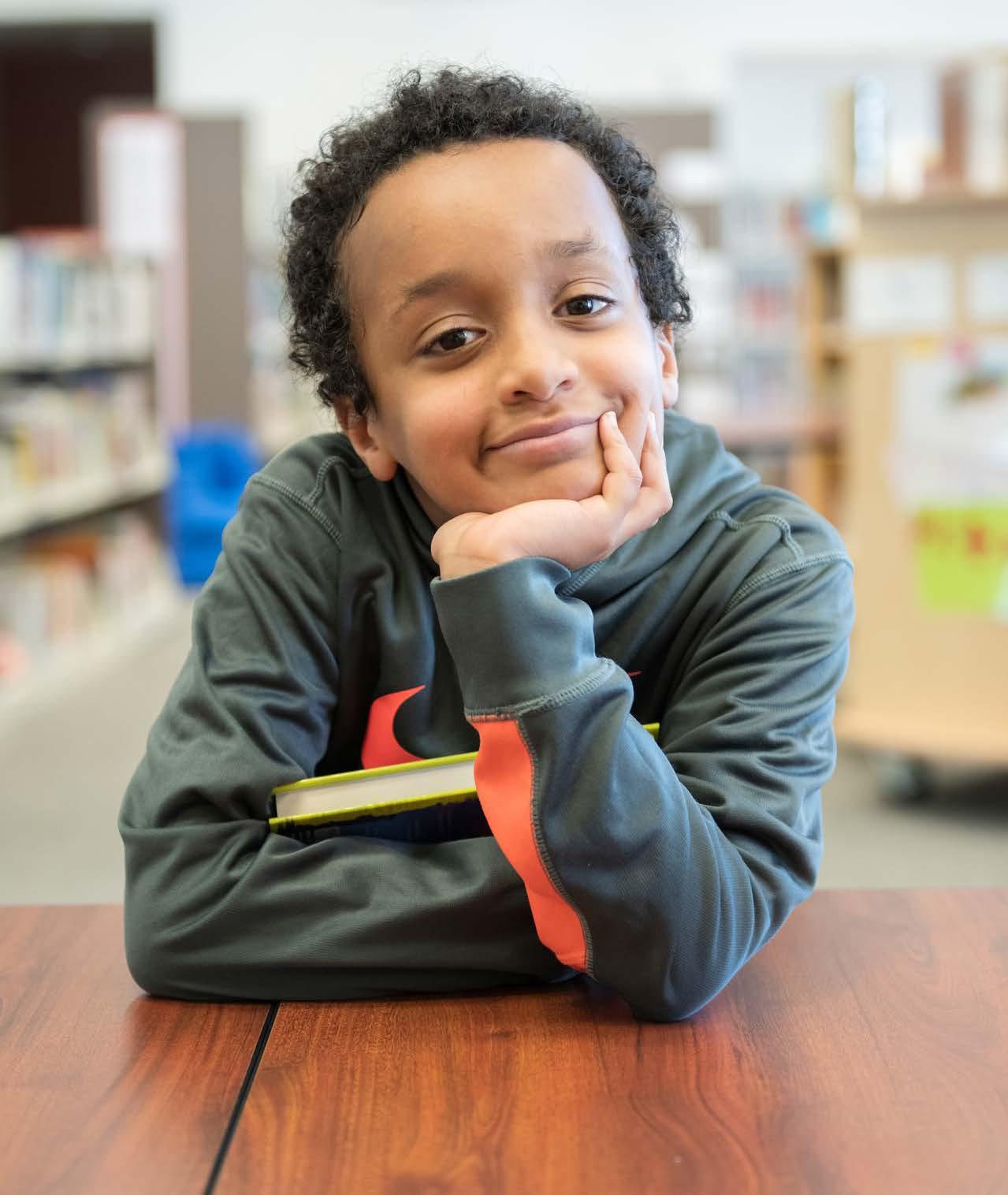
HOUSE: RED WESTERN CEDARS INFLUENTIAL TEACHER: MRS. METZGER “Beauty means you have beautifulness inside of you and you can be nice to everyone and you have freedom.”
Methow Happenings
2018-2019
Class Retreats
Middle School Wilderness Trips
Middle School E-Weeks
Middle School Family Camp Week
Upper School Winter AMPs
Upper School Spring AMPs
Senior Projects
Nordic Team Weekend
Cross-Country Team Retreat
Athletic Student Council Retreat
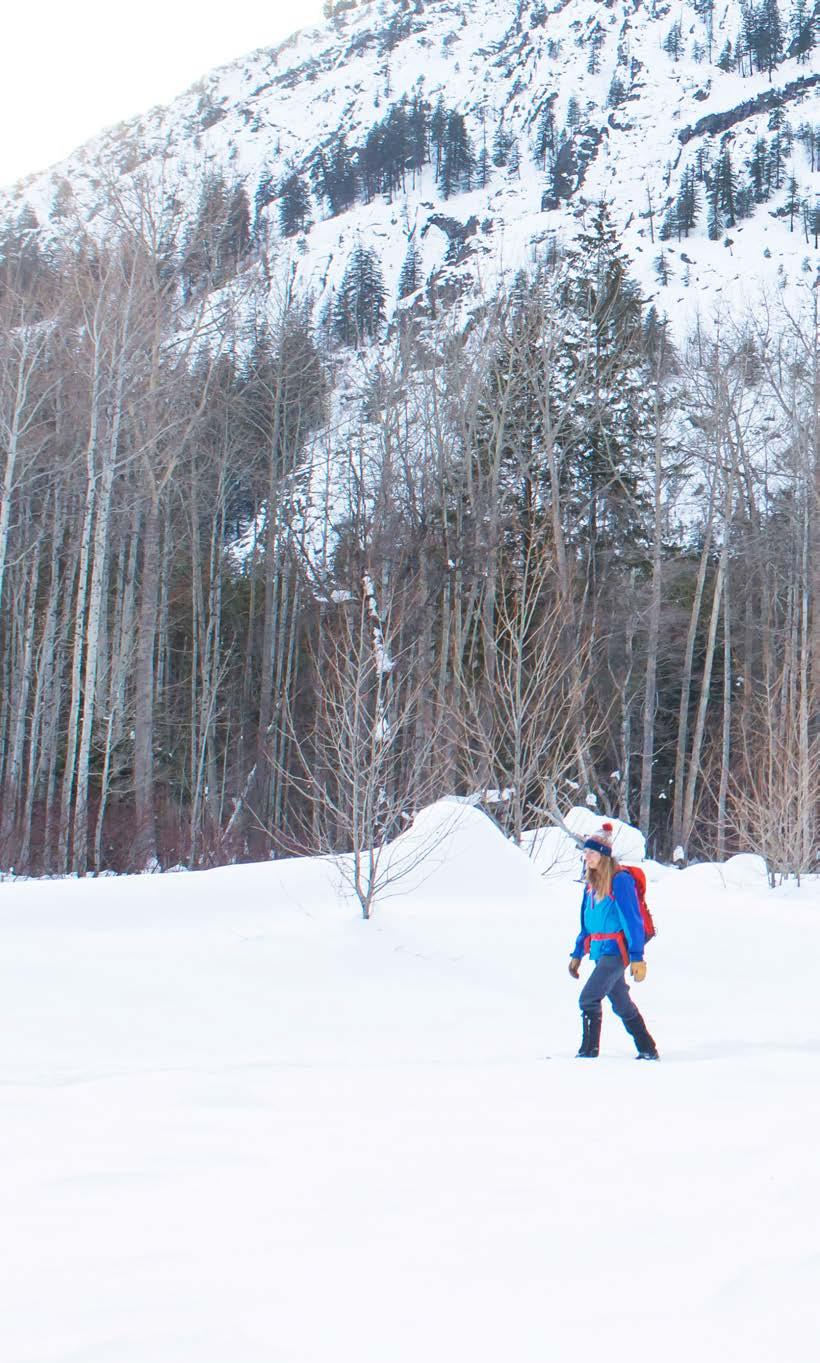
Faculty Workshop
Sixth Grade Faculty Program Planning Trip
Regional ISEEN Faculty Workshop
Family & Alumni Weekends
Community Soup Nights
Local Schools Events
Local Non-profit Board Retreat
Local Non-profit Visiting Student Group
Local Summer Camps
This year marks The Bush School’s third year with student programming on the Methow Campus. This campus, located on the east side of the Cascade mountains, offers opportunities to integrate wilderness, cultural, and academic experiential learning. At the Methow Campus, we connect mind, passion, and community through rich, immersive programs. In this article, Methow Program Coordinator Hilary Kaltenbach describes the magic of placebased learning by sharing stories from this year’s programming.
—HEAD OF SCHOOL PERCY L. ABRAM
BUSH METHOW CAMPUS
Learning the Stories of Place
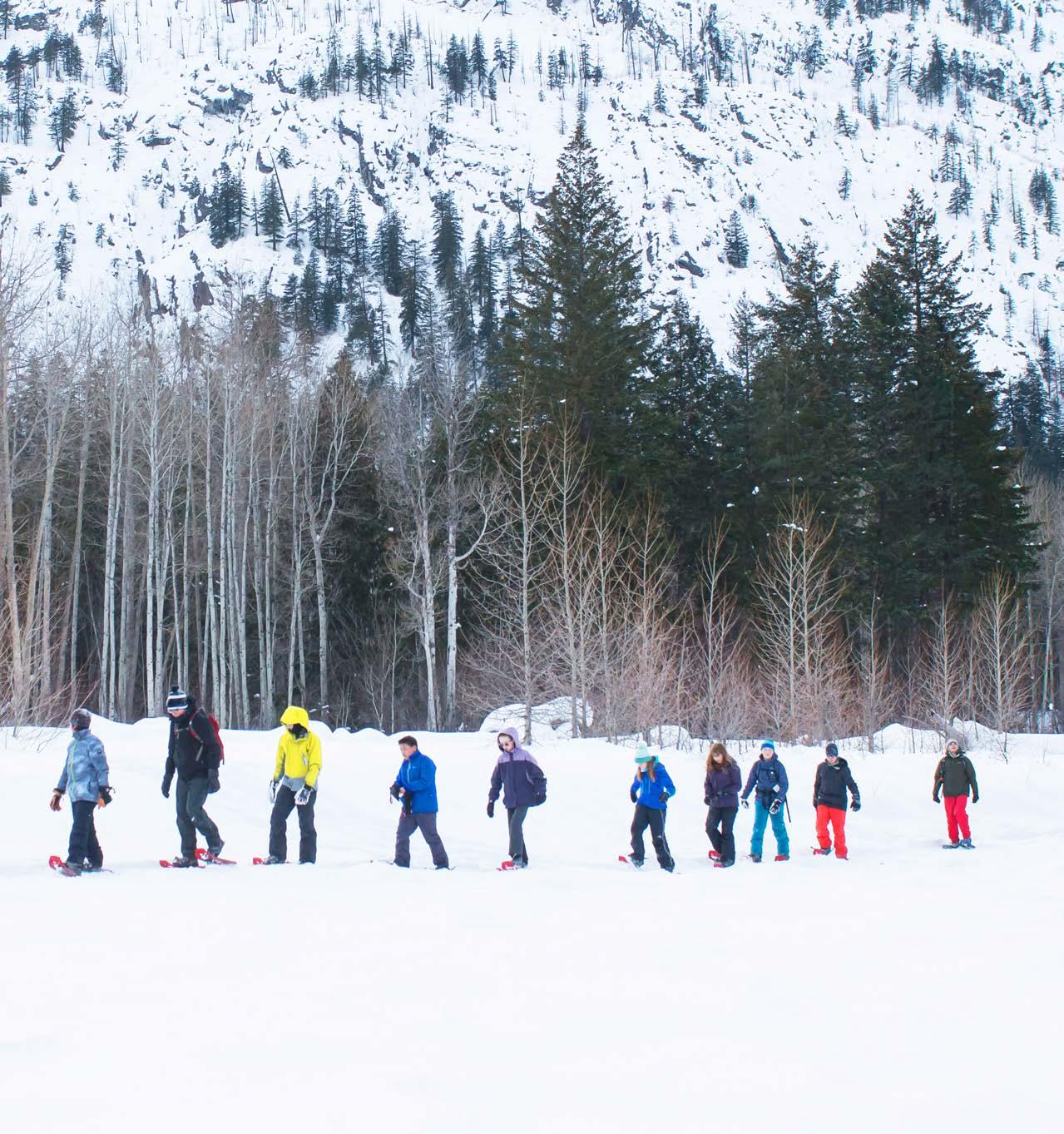
hat do you think happened here? Faces press closer to the level of the snow, as the local Methow naturalist, Mary Kiesau, steps back. “Something came out of the bushes,” one voice suggests. “I think it had flippers!” says another.
“No, it had little feet,” Mary explains. She harnesses enthusiasm and prods young minds to think through their ideas until they realize that wings, too, could make paired imprints in snow. With this, our young snowshoers review the tracks from beginning to end: small prints leading from the bushes, then perfect pairs of wing impressions, first deep, then shallow, then gone.
“A bird!” a student exclaims. There is triumph in the knowing. “A bird ran from the under bushes and flew away!”
In the stillness of the snow and frozen lake, we can almost see the quail bursting from the underbrush and taking flight, its wings beating the snow for traction before finding the air.
Naturalist lesson by Mary Kiesau
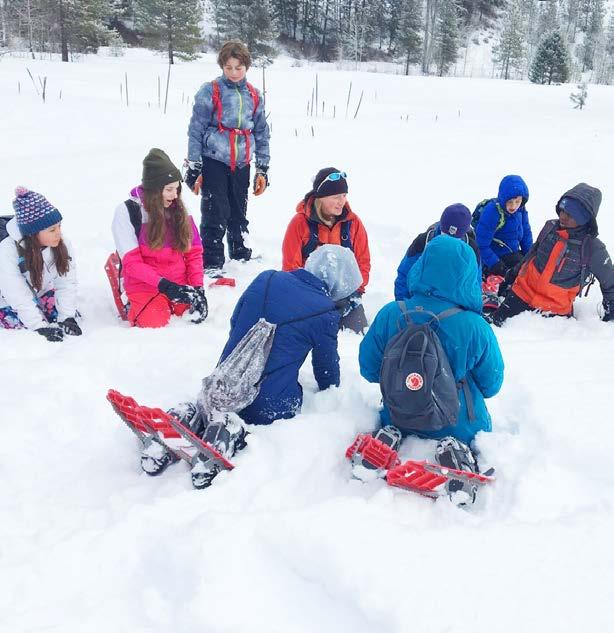
This is the heart of place-based learning: learning the stories of a place. When we adopt a mindset of awareness and curiosity, clues reveal themselves. We take note, ask questions, press further, until the narrative takes shape and we glimpse a perspective other than our own. Why did this quail leave the underbrush? Did a coyote find its hiding spot? Did it hear a call from its covey? Each question nudges our senses awake, gives reason to pay closer attention.
The Methow Valley holds many stories. Flanked by mountain ranges and anchored by the Methow River, the valley is home to a community of five thousand people. Within those five thousand are families who came on homesteading claims, and others who were drawn by the adventure promised by rocky crags and a unrivaled network of trails. It takes some effort to get here, even forty-six years after the opening of the North Cascades Highway. Perhaps it is this remoteness that solidifies the sense of community so palpable here, where residents rally to protect the Methow Headwaters and where, if you have pulled over on the side of the road in winter, someone will stop to be sure you’re okay. This too requires awareness, of others and of a web of connectedness that includes each individual. So how can an independent school 180 miles away from this valley help its students connect to the Methow community and landscape—and bring those skills back to Seattle?
The answer lies in the relationships we forge, how we enter that web of community, and what we create and experience together. This winter, The Bush School hosted monthly community soup nights on the Methow Campus. The concept is simple: neighbors show up, eat together, and learn together through a speaker or short program. In January, students from Upper School PE Teacher and AMP Coordinator James Batey and Upper School Math Teacher and Math Department Chair Christine Miller’s AMP hosted the month’s event, from envisioning its program to ladling soup.
The vision for the evening came from Eleventh Grade student Rayna Simons ’20, who proposed that we create art together. Local Twisp artist Perri Howard designed a program focused on drawing winter landscapes. After bowls of soup and homemade sourdough bread, neighbors gathered around tables in the classroom, with photographs of the Methow and blank sheets of paper. When Perri opened with the question, “Who here can’t draw?” half the room raised hands. But then they did draw—nine-year olds next to sixtynine year olds. Perri guided each artist’s eye to the details of the landscape in the photo before them, the anchor of a ridgeline, the angle of a descending slope. Moments of silence naturally followed laughter and small conversations. We were creating together, side by side, bringing the surrounding world in, and finding skills within ourselves we didn’t know we had.
Will these students and neighbors go home and fill sketchbooks with impressions of their wanderings? Perhaps, but that wasn’t really the goal. The larger hope is that these students will return to Seattle and look at their own neighbor in a new light—as a partner in creation, as someone they can sit down with at a table and share laughter or soup, as someone with whom they share a connection.
This is another vein of place-based learning. When we engage in a place, we begin to see a myriad web of connected stories, and we realize that all people have room to add their own voices. These shared experiences create acceptance and belonging. We contribute our passions and talents to the narrative. Rayna, whose sketchbooks showcase her love of drawing, demonstrates this. Her passion shaped an evening of discovery and togetherness, and so her voice was woven into the story.
Does this magical web of connection exist only in the Methow? Of course not. These interconnected stories of place are around us, wherever we are. Yet sometimes, we need the nudge of the unfamiliar to jar our senses awake. This is the wealth the Methow Campus has to offer: space to disconnect from daily routines in order to fully connect to our surroundings, to our community, to each other.
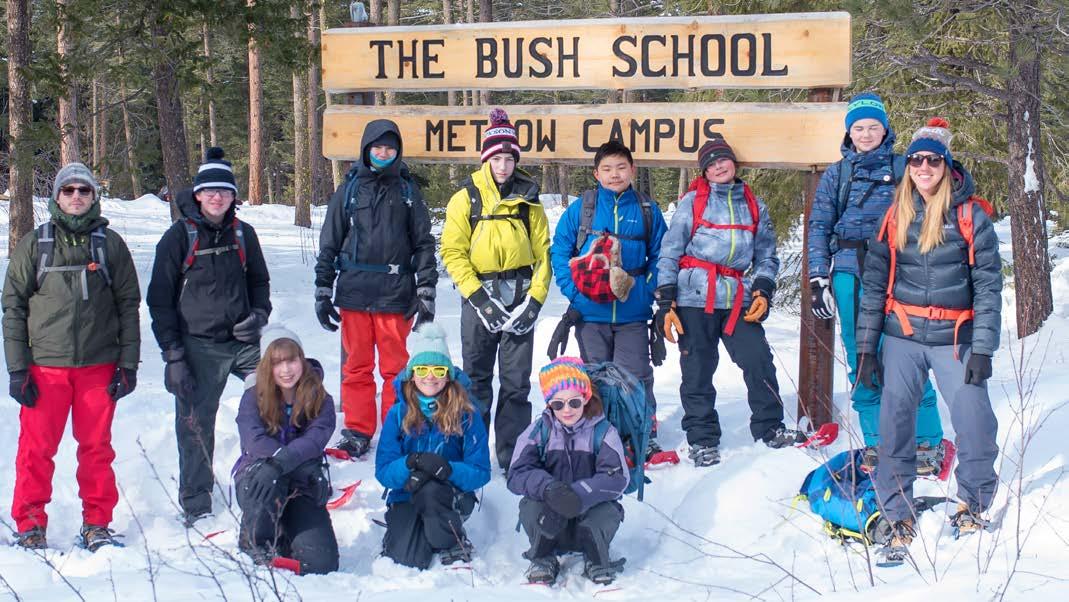
Community Soup Night hosted by Bush students

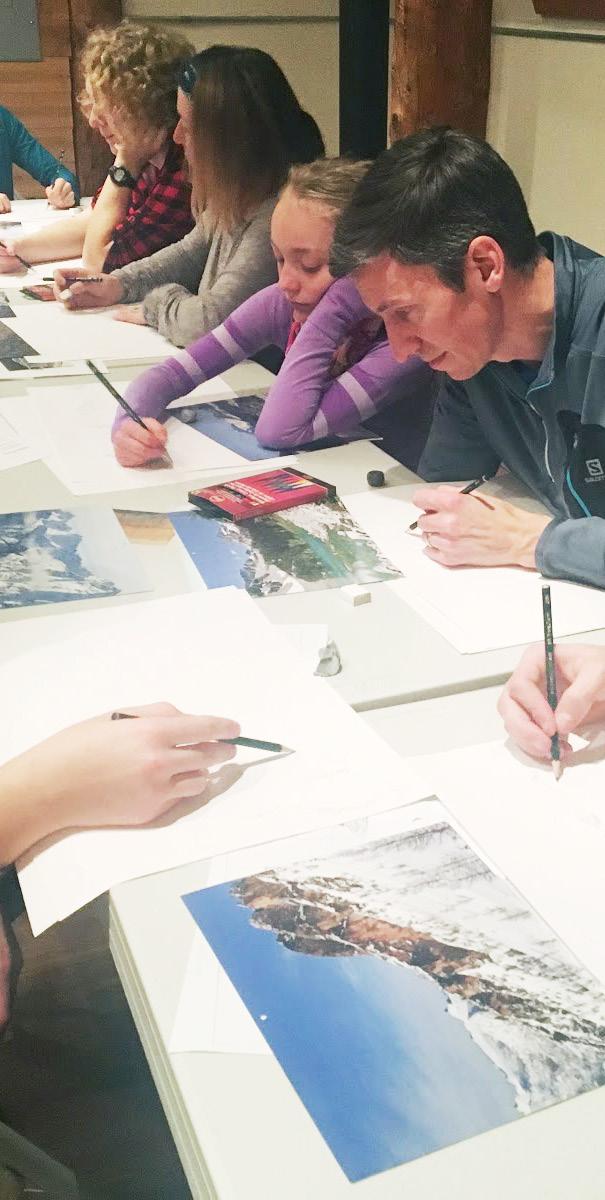
Spotlight on STEM

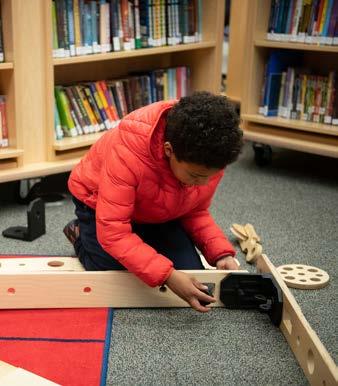

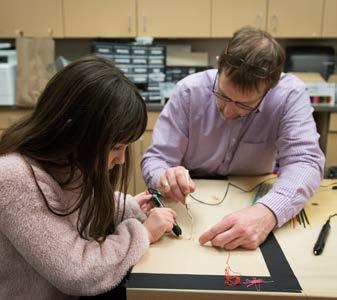
LOWER SCHOOL MAKER NIGHT
The Bush School holds an annual Lower School Family Night themed around “Maker Madness” as part of a monthly series of family nights in the library. The Maker Movement is rooted in the fields of engineering and design; at Bush, the goals are to foster skills in creative thinking, problem solving, artistry, craftsmanship, and design.
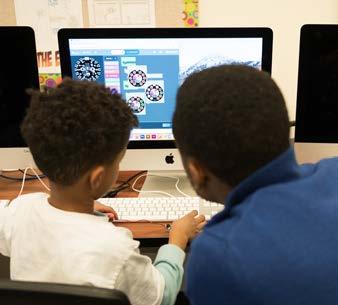

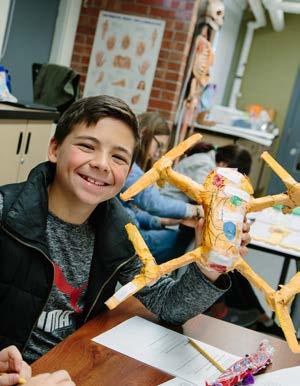
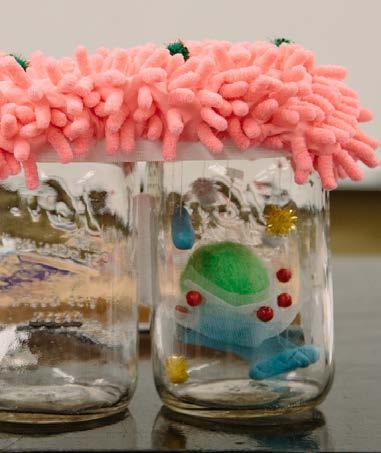
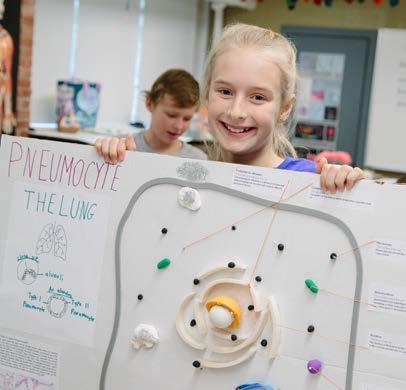
SEVENTH GRADE SCIENCE: CELL PROJECT
Seventh grade is a pivotal year in which to explore the natural world of life science. Children at this age exhibit a balance between the wonder of exploration and the sophistication of understanding and expressing multifaceted concepts. The Seventh Grade Science curriculum takes full advantage of this developmental stage. Students are given the opportunity to explore their natural world, ranging from single-celled organisms to large populations of diverse creatures that interact within their environment to form ecosystems.
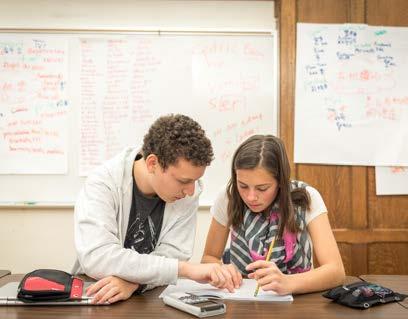
UPPER SCHOOL STEM CENTER
The STEM Center was created as a peer-to-peer tutoring center to help students of all grade levels with math and science. This year, tutors paired up with teachers to help with nearly all Bush math and science classes. STEM Center is made up of teacher-nominated juniors and seniors who have displayed competence in STEM classes, as well as a drive to help better others’ understanding of those fields. The student tutors are dedicated to helping others understand complex ideas and work through challenging problems. They say: “We know the work that comes with these classes—we’ve all taken them, and we love to help others.”
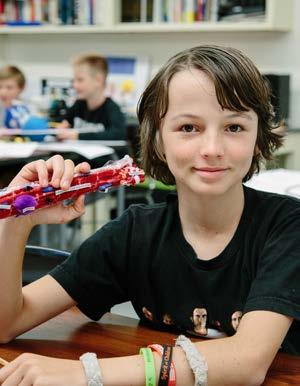
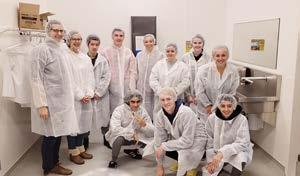
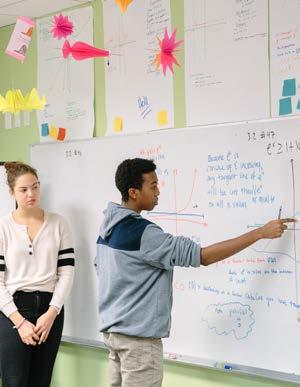
ATHLETICS
Scarves Up! Joshua ’20 Wins Competition to Design Sounders Scarf
Joshua’s winning design was distributed to all Alliance Members as part of their 2019 season ticket package. To capture the creativity of Sounders fans, the Alliance Council began sponsoring this scarf design contest back in 2012. These scarves have become a symbol of the passion and loyalty of Sounders fans.
Coach John Ganz
retires after a twentynine year run
This year, Upper School Counselor John Ganz has been to athletic competitions as “just” a Blazers fan for the first time in his tenure at Bush. He coached track and field for twenty-nine years, cross country for twenty, and bowling for at least six years. John decided that after a great 20172018 season, he was ready to step away from coaching while continuing his counseling role.
As a coach, John’s philosophy was studentcentered. He focused on developing skills and tracking personal records closely— sometimes daily. John says that he’s still in touch with athletes, and that sports are “a way to connect alumni to the school.” He continues, “When alumni come back, there are three areas that they will bring up as a touchpoint: wilderness programs, performing arts, and athletics. It’s those connections that are why I coached.” He also mentions how much he has learned from new coaches during his time at Bush, citing bringing in new talent as highly important to the programs he’s been a part of.
John finishes the conversation by telling the story of the bowling team. “There were two throwers on the track team, and as the season was ending, we talked about what they were going to do in the winter. They decided to start a bowling team. And so we started a bowling team, and it ran for about six or seven years. Kids can do those kinds of things here. It’s unique to this place.”
Bush is grateful to John for his many years of coaching and for his continued work as a counselor.
“I’m a Sounders fan and I’ve done a bit of graphic design, so when I read about the contest online, I figured I’d give it a shot. I was pretty surprised and excited when my design was selected by the Alliance and my fellow fans! My scarf showcases the orca from the 1990s USL-era Sounders logo, with the Olympic Mountains in the background. I hoped to celebrate both the team’s history and the natural beauty of the Puget Sound.”
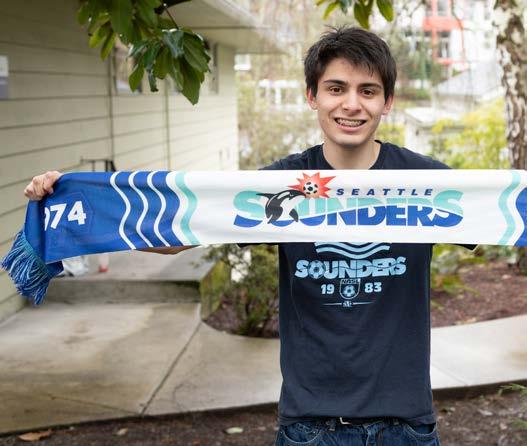

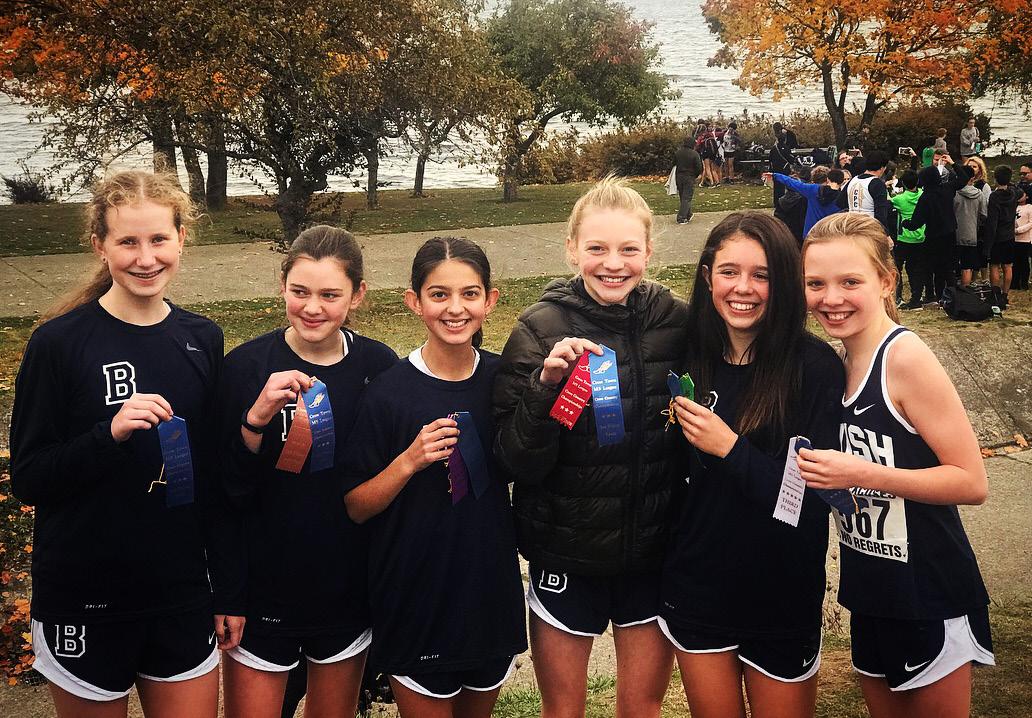
Middle School Girls Cross Country Team wins League
PHOTO BY SHANNON GOODING
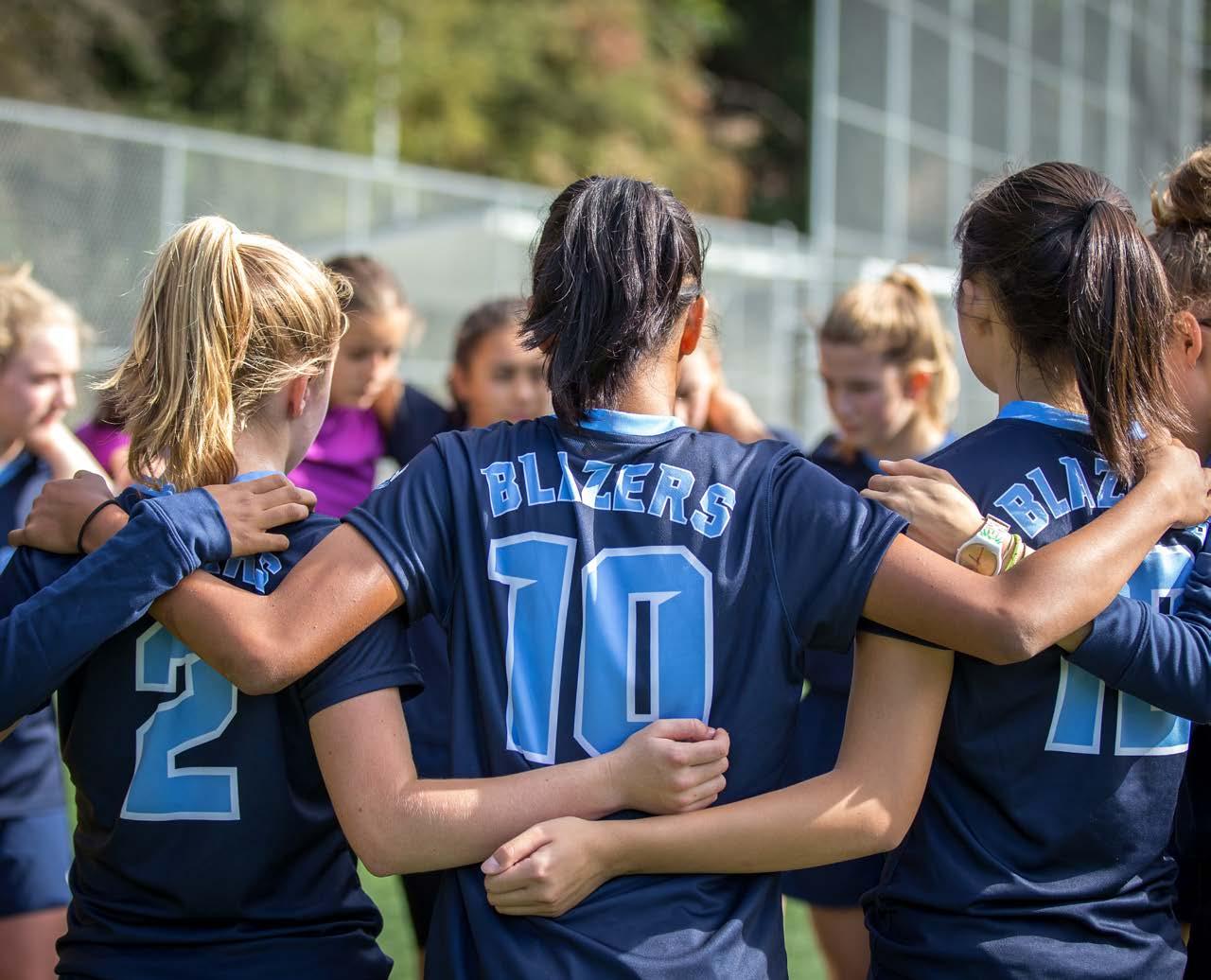
Deven Goel and Ben Kopstein - Varsity Boys Basketball Ethan ’18 - ECL Cross Country and Track & Field All League First Team, 3200m School Record Holder: 09:43.62
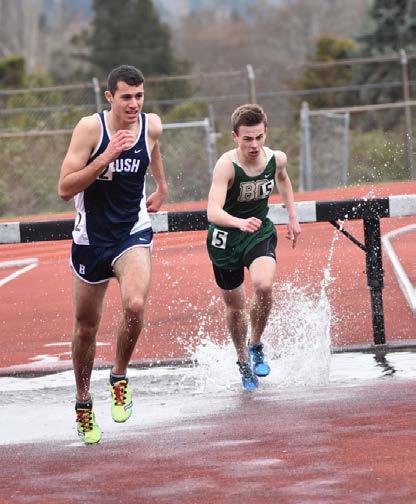
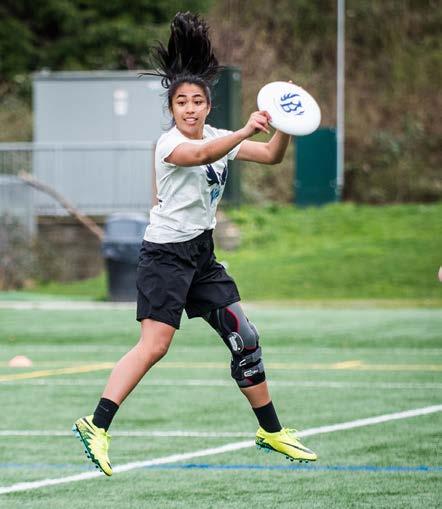
Sophie ’18 - ECL Girls Ultimate MVP & All League First Team
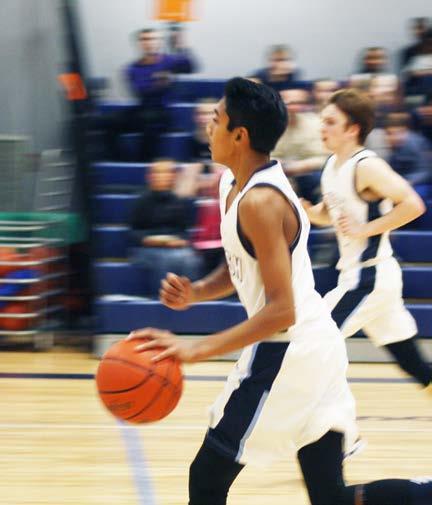
PHOTO BY MIGUEL DECAMPOS PHOTO BY TOM NICKELS
ATHLETICS
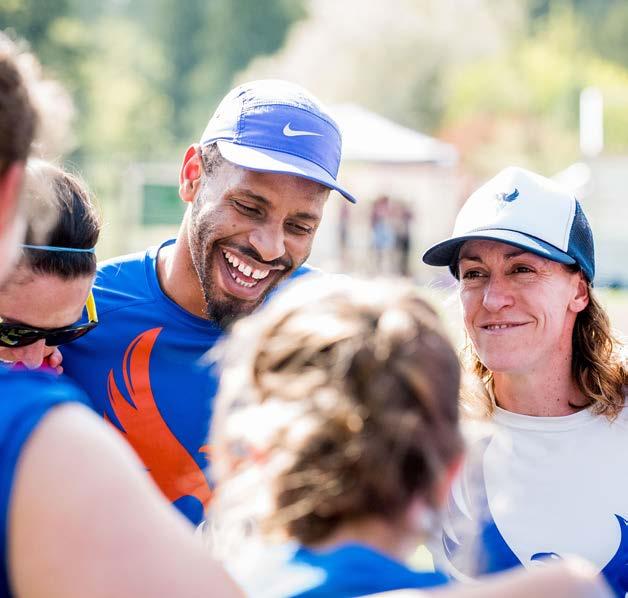
Season Highlights
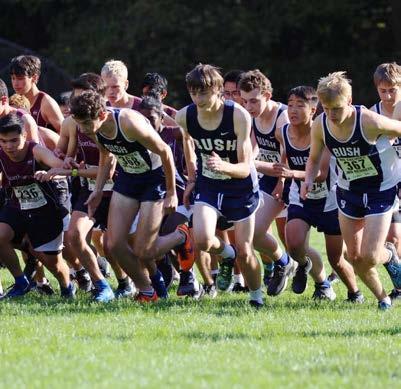
Three-time ECL & two-time Bi-District High Jump Champion Eleanor ’18 with Coach Floyd Webb ECL Girls Volleyball MVP, All League First Team, All State Honorable Mention - Julia Deegan. ECL All League First Team - Noah ’19 and Taylor ’19, ECL Rookie of the Year: Kaito ’22.
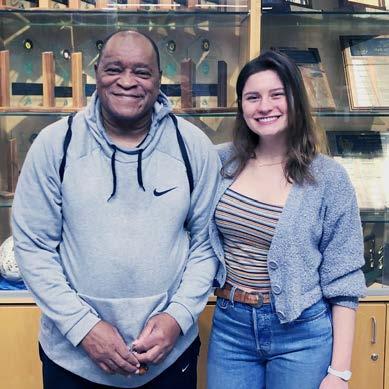

Lower School Runners and Families at Seattle Kids Marathon. Varsity Girls Basketball team, including ECL All League First Team Abby ’19 (center left, back row), All League Honorable Mention Aniyah ’22 (center right, back row), and ECL Coach of the Year Sara Fischer (front right)
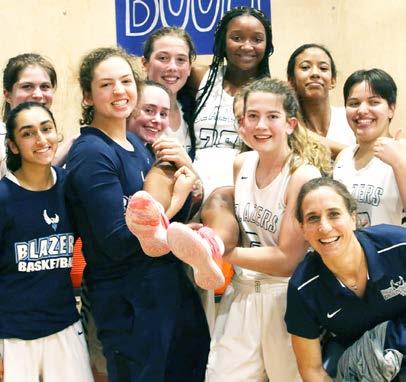
BOYS SOCCER: The team took fifth place in the Emerald City League, with Kanish Puri ’18 making All League First Team and Brandon Nowbar ’19 making All League Second Team.
GIRLS TENNIS: The girls tennis team took second place in the league, with Mia Parrish ’19, Lili Randolph ’19, and Gabby Pratt ’19 qualifying for Bi-Districts, and Gabby Pratt ’19 advancing to the State Championships. All three athletes also made All League First Team.
TRACK & FIELD: The track and field team had a great season. Highlights included Eleanor Hulse ’18 taking first place in the high jump at Bi-Districts and League Championships with a jump of five feet zero inches, and Ethan Widlansky ’18 setting a new boys school record for the 3200m race with a time of 09:43.62. Additionally, nine athletes made All League First Team and five qualified for the state championships.
All League First Team:
• Mia Agostini GIRLS 4X400R • Oona Dederer GIRLS 4X400R
• Chase Habu-Chinn BOYS LONG JUMP
• Eleanor Hulse GIRLS HIGH JUMP
• Tori Kippes GIRLS LONG JUMP
• Ela Nickels GIRLS 800M, GIRLS 1600M, GIRLS 4X400R
• Sam Thompson BOYS 400M, BOYS 800M
• Ethan Widlansky BOYS 1600M, BOYS 3200M • Jasmine Young GIRLS 4X400R
State Championship Qualifiers:
• Ethan Widlansky BOYS 1600M (Medalist, 7th Place) • Ethan Widlansky BOYS 3200M (Medalist, 5th Place) • Ela Nickels GIRLS 800M
• Ela Nickels GIRLS 1600M
• Sam Thompson BOYS 400M
• Eleanor Hulse GIRLS HIGH JUMP (Medalist, 7th Place) • Tori Kippes GIRLS LONG JUMP
GIRLS ULTIMATE: The girls ultimate team took second place in the league and qualified for the DiscNW State Championships, with Sophie Redila ’18 achieving the honor of All League MVP. Along with Anika Quon (graduating from United World College in 2019), she also made All League First Team. Sabine Blumenthal ’19 achieved an honorable mention, and coaches Kate Kingery, Husayn Carnegie, and Claire Thallon were honored with ECL Coaches of the Year. The team won the Emerald City League Sportsmanship Award.
FALL 2018
CROSS COUNTRY RUNNING: Congratulations to the Blazers Cross Country team for their strong showing at the State Championships! Ela Nickels ’19 placed thirteenth and Noah Cape ’19 placed sixteenth. Both runners had the top times for Bush and earned a medal!
All League Girls First Team:
• Ela Nickels
• Lolo Dederer
Girls Team qualified for state championships:
• Ela Nickels (Medalist, 13th Place) • Lolo Dederer (46th Place) • Liya Miskovsky (112th Place) • Dalia Cape (123rd Place) • Dylan Cundiff (127th Place) • Sabine Blumenthal (148th Place)
All League Boys 1st Team:
• Noah Cape • Taylor Cundiff
ECL Boys Rookie of the Year:
• Kaito Hikino
Boys Individual State Championship Qualifiers:
• Noah Cape (Medalist, 16th Place) • Kaito Hikino (39th Place) • Taylor Cundiff (55th Place)
GIRLS SOCCER: The girls soccer team took fourth place in the Emerald City League and first place in their division, qualifying for the Bi-District Tournament. Congratulations to Addy Ferris ’21 for making All League First Team and Claudia Abram ’21 and Lyla Barrett ’20 for making All League Second Team, as well as Elle Jones ’22 for being named ECL Rookie of the Year.
GOLF: Congratulations to Wesley Saliman ’21 for making All League First Team and medaling in each of the Blazers golf matches in the fall season. Wesley also qualified for Bi-Districts along with Ryan Gow ’20.
BOYS TENNIS: The boys tennis team took fifth place in the league. Congratulations for this strong showing.
BOYS ULTIMATE: The boys ultimate team took fifth place in the league, and Hayden Ratliff ’19 earned All League First Team honors.
VOLLEYBALL: The Blazers Volleyball season ended with a loss at the Bi-District Tournament against a tough Nooksack Valley team, after taking second place in the league. This was the most successful season for the Blazers Volleyball Program in many years. Sophie Stephenson ’22 and Julia Deegan ’20 made All League First Team. Julia was also selected as the League MVP and received an All State Honorable Mention.
WINTER 2018 – 2019:
GIRLS BASKETBALL: Led by Coach of the Year Sara Fischer, the girls basketball team finished third in the league and made its first appearance in the Bi-District Tournament in many years. The team finished with an overall record of 14-7 and Abby Parrish made All League First Team honors, while Aniyah Grant received an All League Honorable Mention.
BOYS BASKETBALL: The Blazers Boys Varsity Basketball Team capped off a successful season by qualifying for the ECL tournament with a victory over Eastside Prep in the regular season finale. Unfortunately, due to snow and school closures, the league tournament was cancelled. The team played with a high level of competitiveness throughout the season, peaking in the last few weeks, with Kai Osaka receiving All League Second Team honors.
CROSS COUNTRY SKIING: The Cross Country Ski Team had a fantastic season including an exciting experience at the Race of the Methow. Everyone skied hard, whether it was during four classic sprints on Saturday, an afternoon group ski to the Mazama store, a skate race on Sunday, or a quick rip down the Methow Community Trail.
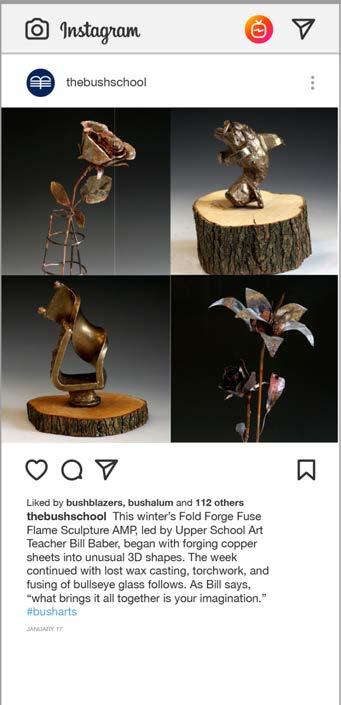

#BUSHArts
At Bush, we like to say that creativity is in our DNA. We are celebrating #BUSHArts, and hope you will join us in posting your pictures capturing the arts at Bush using the hashtag #BUSHArts, whether you are a current student, parent, or alum.
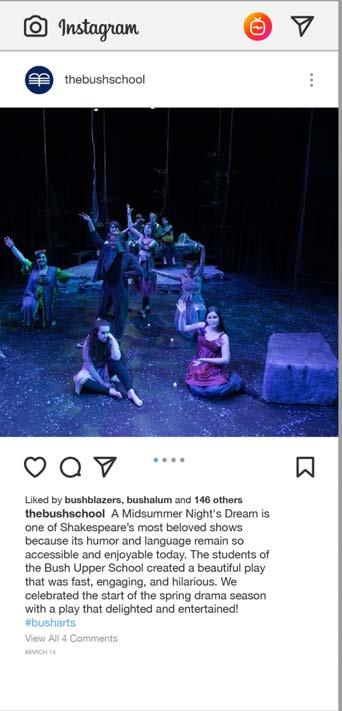



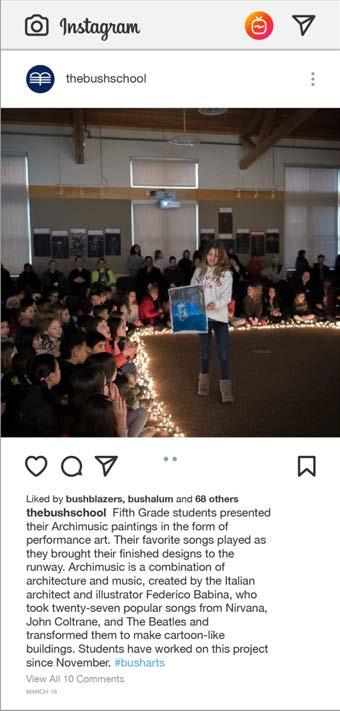
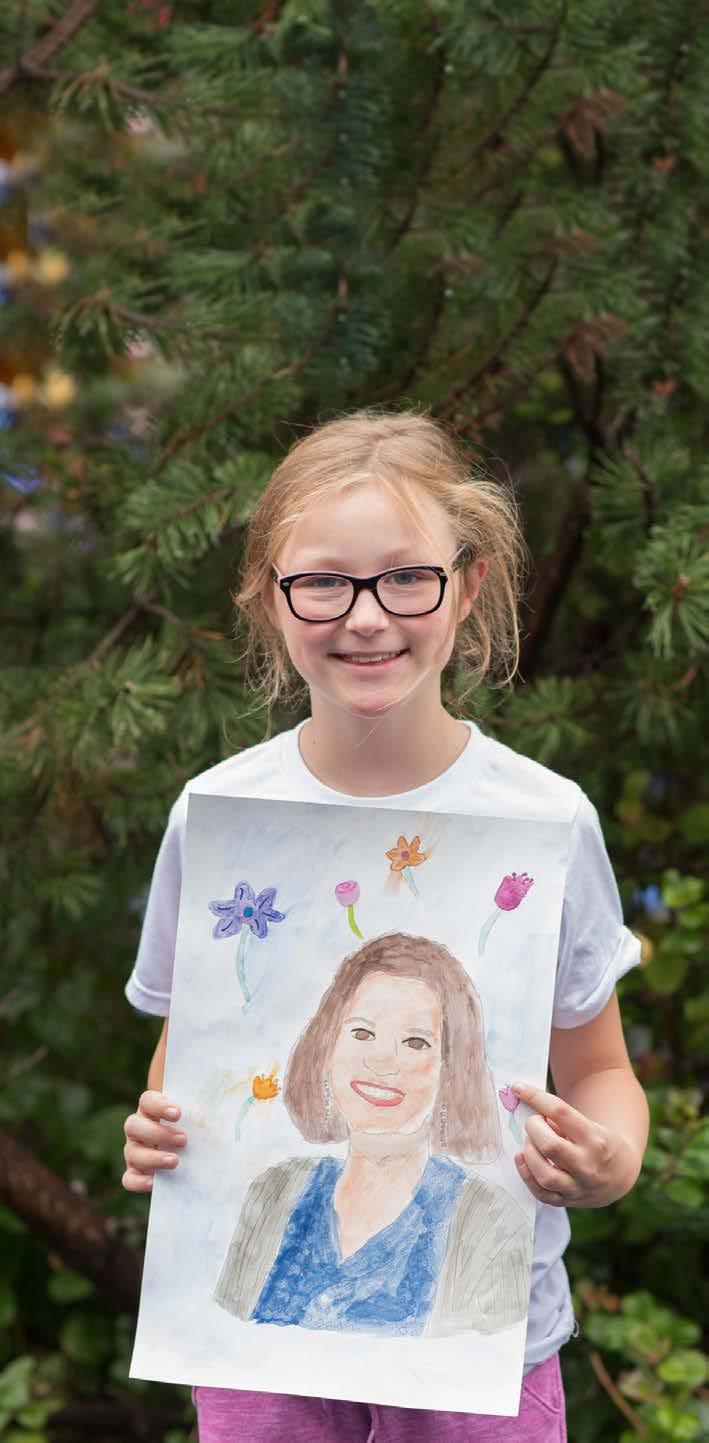
HERO PROJECT “My hero is my kindergarten teacher, Janet. She has been teaching for thirty years. She is my hero because she is patient and kind. If I tried to spend twenty minutes teaching a kindergartener, I’d give up. Spending five hours with them must take a lot of patience. Also, who gets kindergarteners to learn without being kind? Thanks to Janet, I love to read, write, add, and subtract. She was, and is, an amazing teacher.” — ADA M. ’26
“The best part of my year at school was when I was on the basketball team. It was my first time playing basketball. It was also a risk, because before that I’d had very bad experiences with team sports. But this year was so fun that I’m planning on playing sports in Middle School too. I think beauty is in the eye of the beholder and it’s something that makes you happy. If, let’s say in basketball, someone scores a goal, it’s beautiful to one team, but it’s a lot harder to think it’s beautiful on the other team. A beautiful moment for me this year was when I got 100% on my math test!”
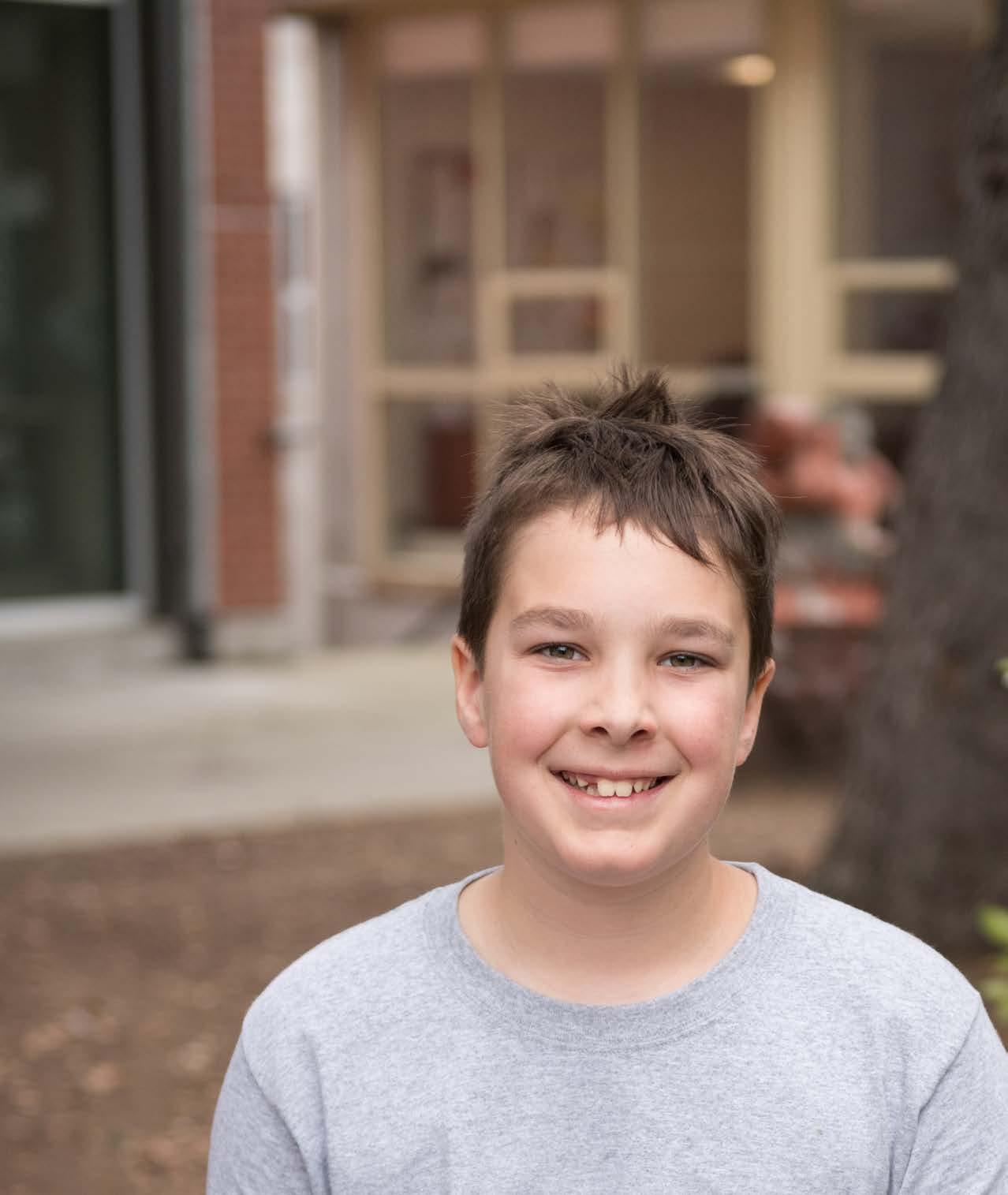
Simon ’26
HOUSE: PURPLE SUGAR PINES INFLUENTIAL TEACHER: IF I’M FEELING CREATIVE, MR. JACKSON, AND IF I WANT TO GET STUFF DONE, IT’S ROSEMARY WHEELER. BUSH SHOULD NEVER CHANGE: The freedom that it gives you.
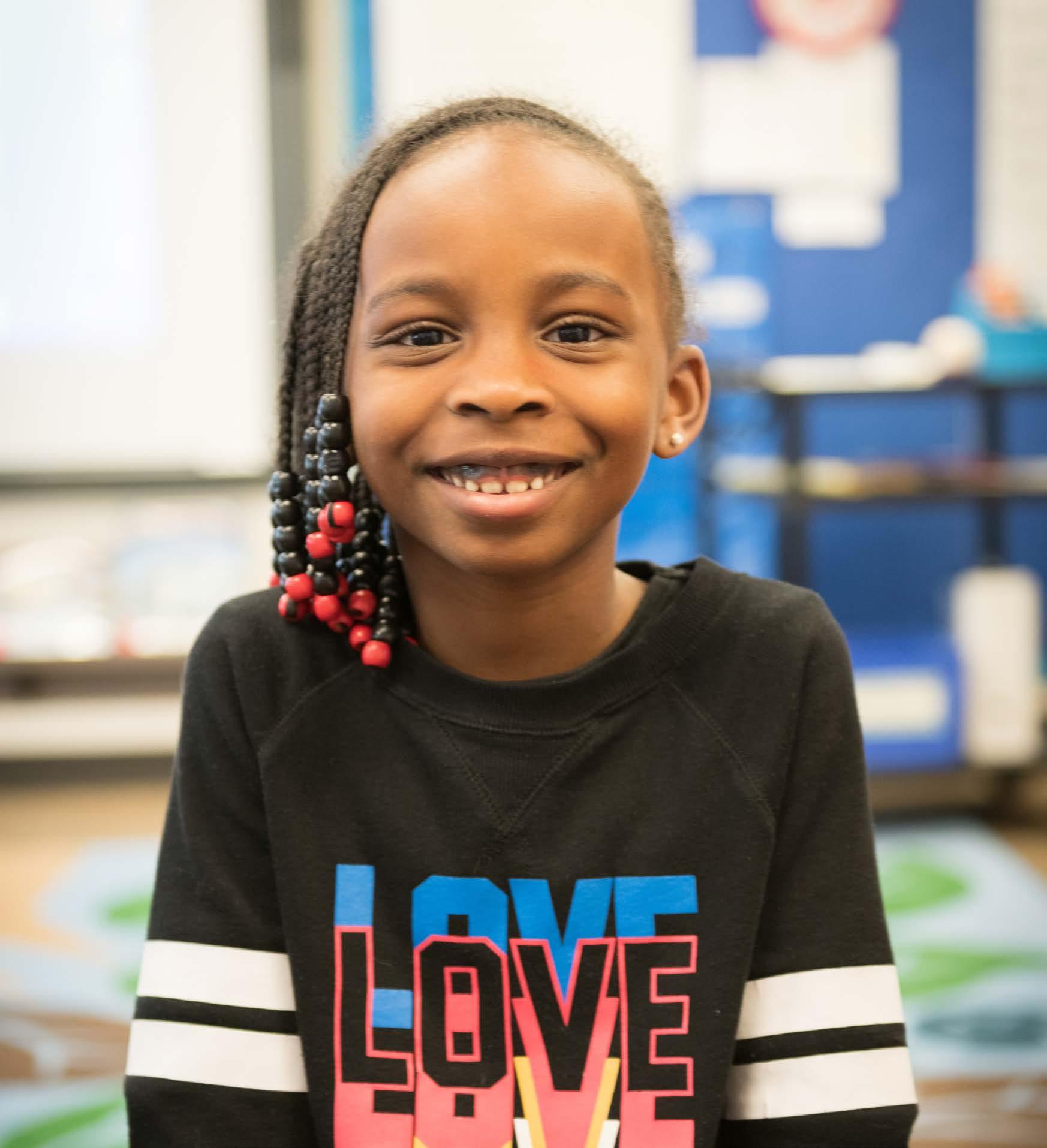
Dara ’30
HOUSE: GREEN GIANT SEQUOIAS INFLUENTIAL TEACHER: BUSHRA JAWED & CLAIRE WILSON








